Note to journalists / Note aux journalistes / Nota a periodistas
The use of these photos by journalists is strictly limited to coverage of the ICCA Consortium’s “Territories of Life: 2021 Report” or coverage related to the territories portrayed with express consent from the Indigenous and community authorities. Please caption and credit properly.
L’utilisation de ces photos par les journalistes est strictement limitée à la couverture du rapport 2021 sur les territoires de vie du consortium APAC, ou à la couverture des territoires représentés avec le consentement exprès des autorités Autochtones et communautaires. Veuillez sous-titrer et créditer correctement.
El uso de estas fotos por periodistas está estrictamente limitado a la cobertura del Informe 2021 sobre territorios de vida del Consorcio TICCA, o a la cobertura especial sobre los territorios listados, siempre que se cuente con el consentimiento expreso de sus autoridades. Por favor, citar y dar los créditos de acuerdo a las leyendas.
Canada
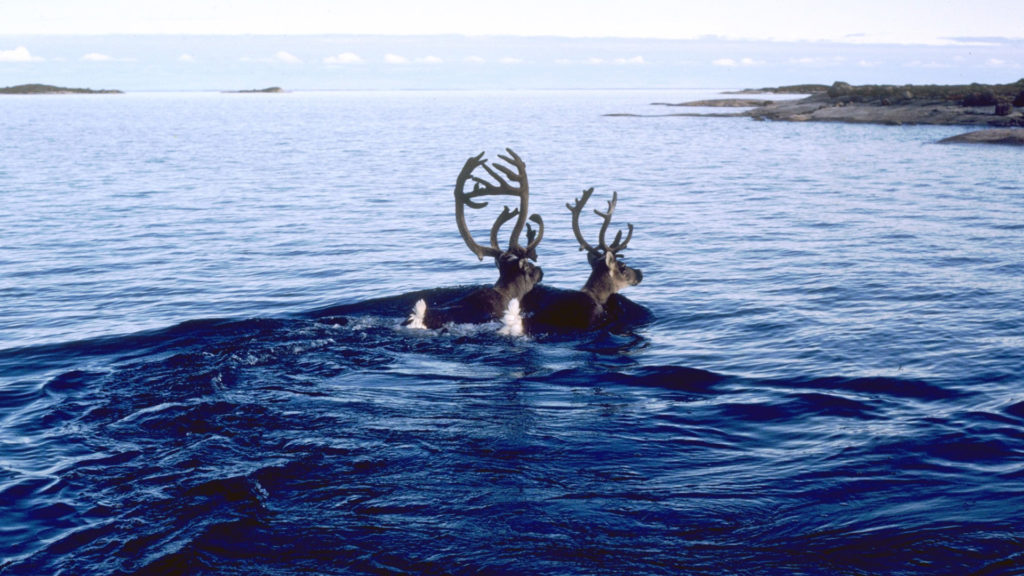 Caribou swimming in Camsell Bay, Nettilling Lake, Baffin Island. Photo: Michael Ferguson
Caribou swimming in Camsell Bay, Nettilling Lake, Baffin Island. Photo: Michael Ferguson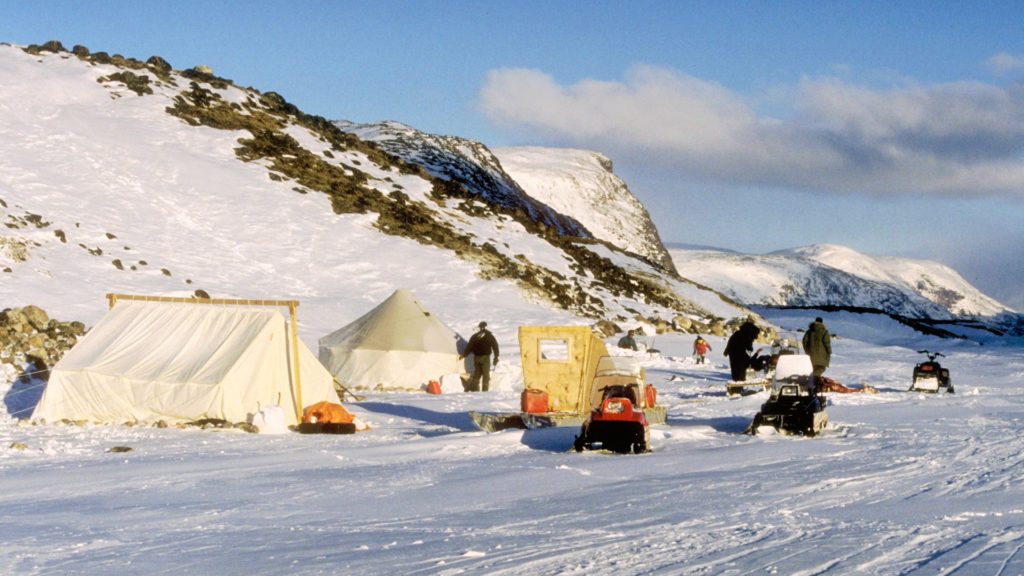 Spring family camping. Photo: Michael Ferguson
Spring family camping. Photo: Michael Ferguson Pond Inlet beach and Bylot Island. Photo: Michael Ferguson
Pond Inlet beach and Bylot Island. Photo: Michael Ferguson
China
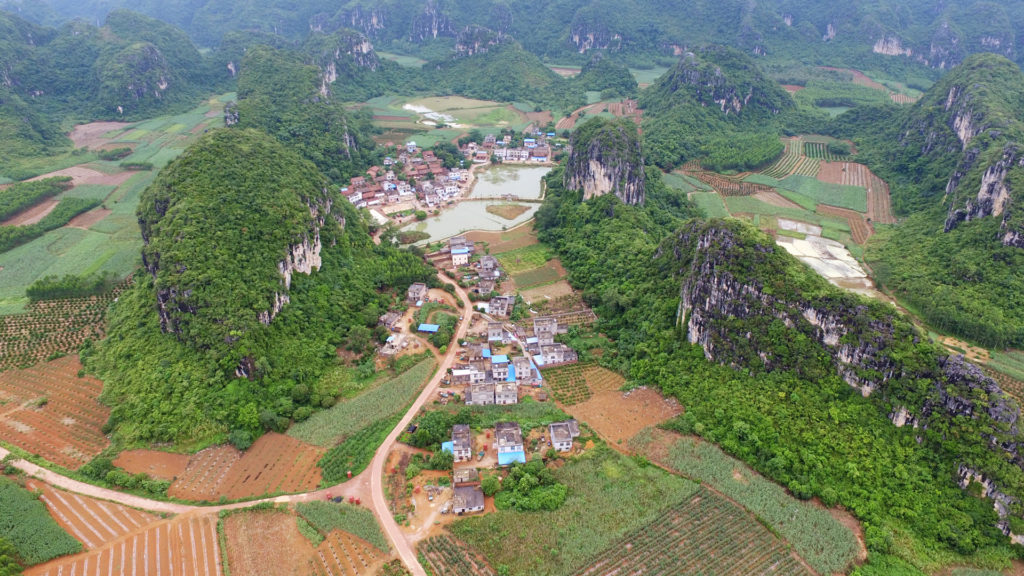 Typical limestone landscape surrounding the village of Qunan. The valleys have been extensively cultivated over hundreds of years while the forests on the limestone hills have been relatively well protected. Photo: BRC / Qingchuan Song.
Typical limestone landscape surrounding the village of Qunan. The valleys have been extensively cultivated over hundreds of years while the forests on the limestone hills have been relatively well protected. Photo: BRC / Qingchuan Song.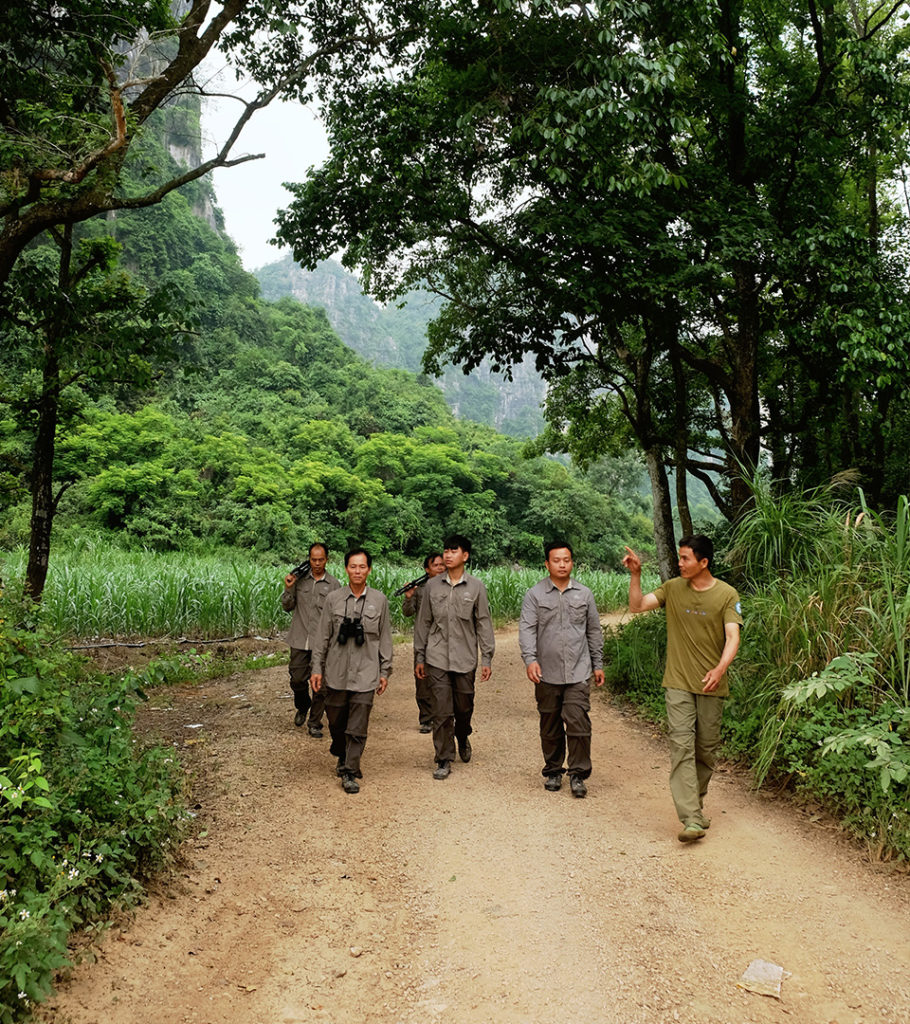 The volunteer patrolling group of Qunan. Photo: Okranz / BRC
The volunteer patrolling group of Qunan. Photo: Okranz / BRC The White-headed langur lives in family groups with one adult male and several adult females. As a leave-eating monkey skilful in climbing cliffs, they are very adaptive to the limestone ecosystem. This species is listed as a grade I national protected animal and no hunting is allowed. Photo: Jipeng Liang
The White-headed langur lives in family groups with one adult male and several adult females. As a leave-eating monkey skilful in climbing cliffs, they are very adaptive to the limestone ecosystem. This species is listed as a grade I national protected animal and no hunting is allowed. Photo: Jipeng Liang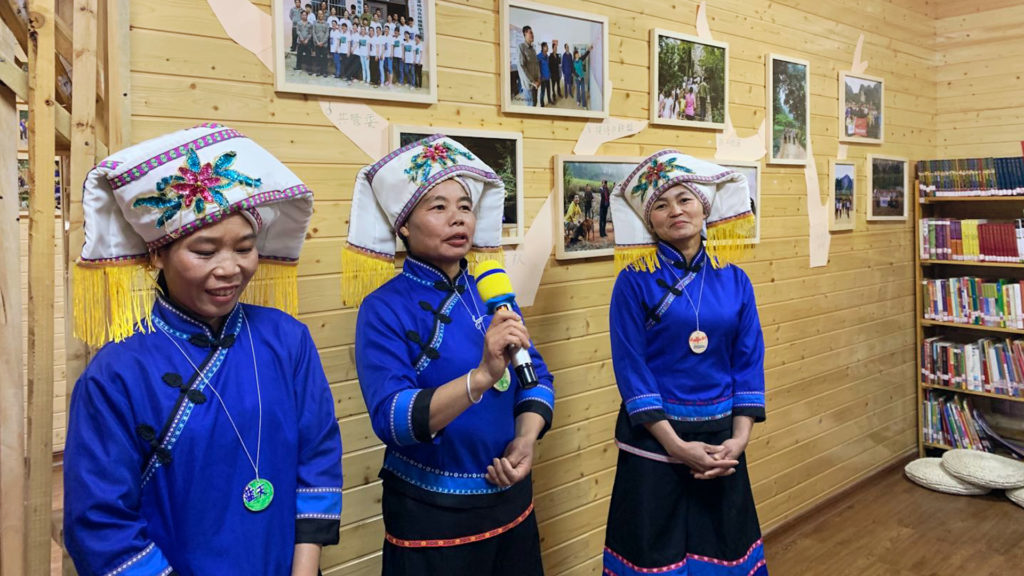 The nature educators of the Kapok women’s group in traditional Zhuang dress. Photo: Wuying Lin / BRC
The nature educators of the Kapok women’s group in traditional Zhuang dress. Photo: Wuying Lin / BRC
Democratic Republic of Congo
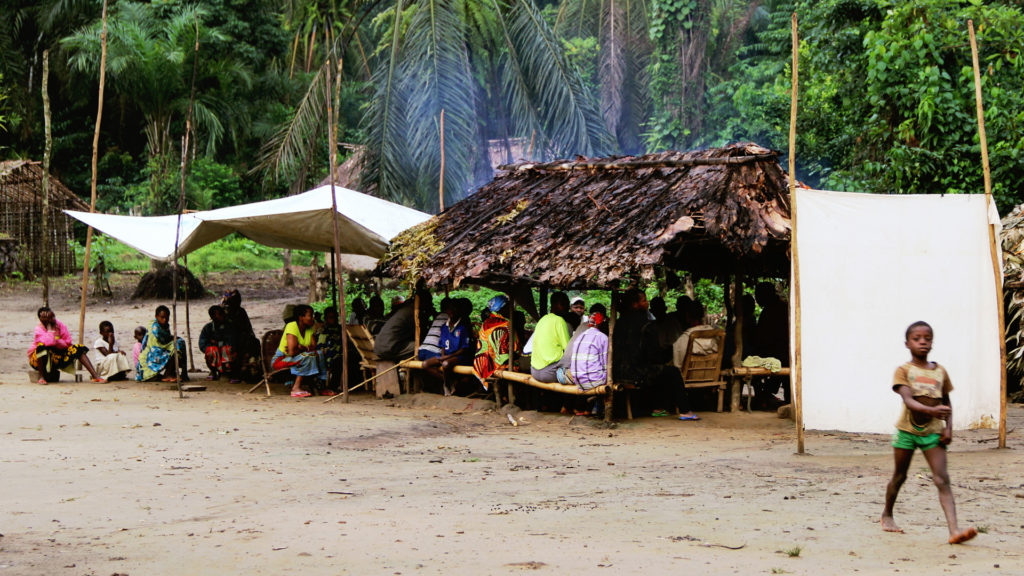 The Babuluko Pygmy community, marginalised for centuries, has discovered that it has rights, is getting to know those rights, and is taking steps to save its territory of life and obtain legal recognition of its knowledge and capacity to conserve Congolese biodiversity. Photo: Christian Chatelain
The Babuluko Pygmy community, marginalised for centuries, has discovered that it has rights, is getting to know those rights, and is taking steps to save its territory of life and obtain legal recognition of its knowledge and capacity to conserve Congolese biodiversity. Photo: Christian Chatelain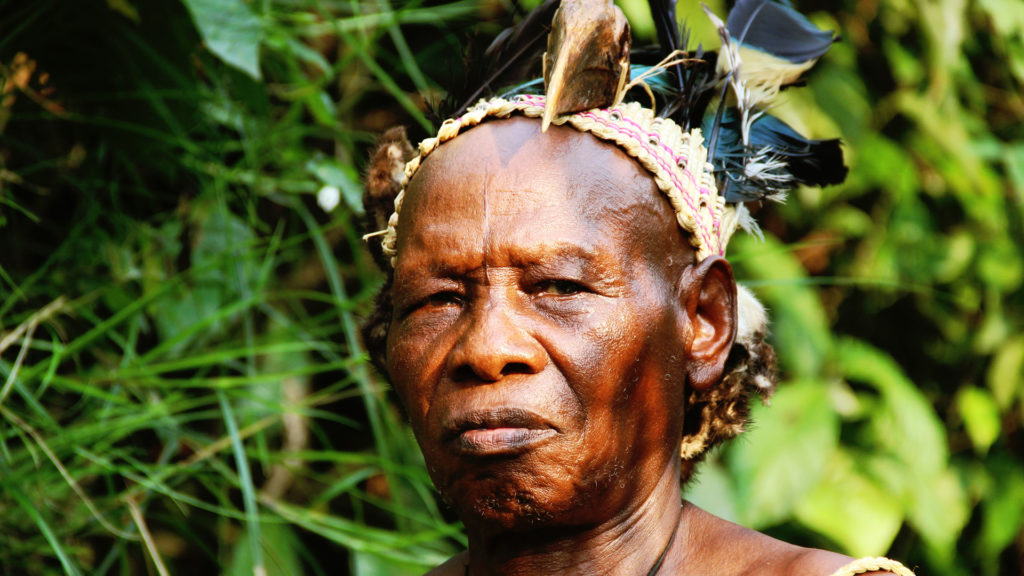 Chief Aluta, traditional Indigenous leader of the Bambuti-Babuluko community of Kisimbosa. Photo: Christian Chatelain
Chief Aluta, traditional Indigenous leader of the Bambuti-Babuluko community of Kisimbosa. Photo: Christian Chatelain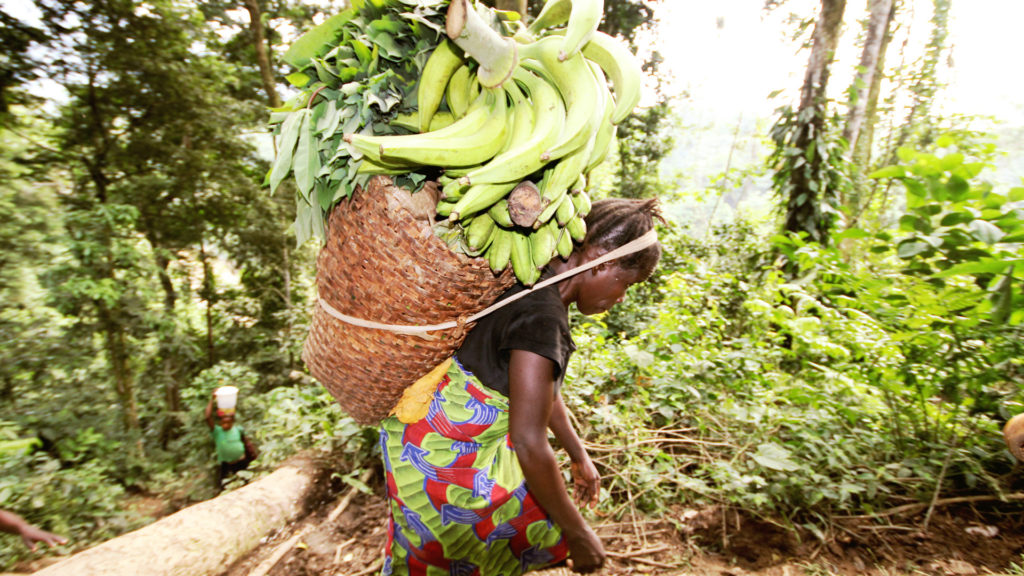 This woman goes to the market with, at the very least, 20 kg of bananas, cassava and marantaceae leaves on her back. She will carry this load for more than 3 hours and will come back with an equally heavy load of rice, sugar, salt and other products necessary for her whole family. Photo: Christian Chatelain
This woman goes to the market with, at the very least, 20 kg of bananas, cassava and marantaceae leaves on her back. She will carry this load for more than 3 hours and will come back with an equally heavy load of rice, sugar, salt and other products necessary for her whole family. Photo: Christian Chatelain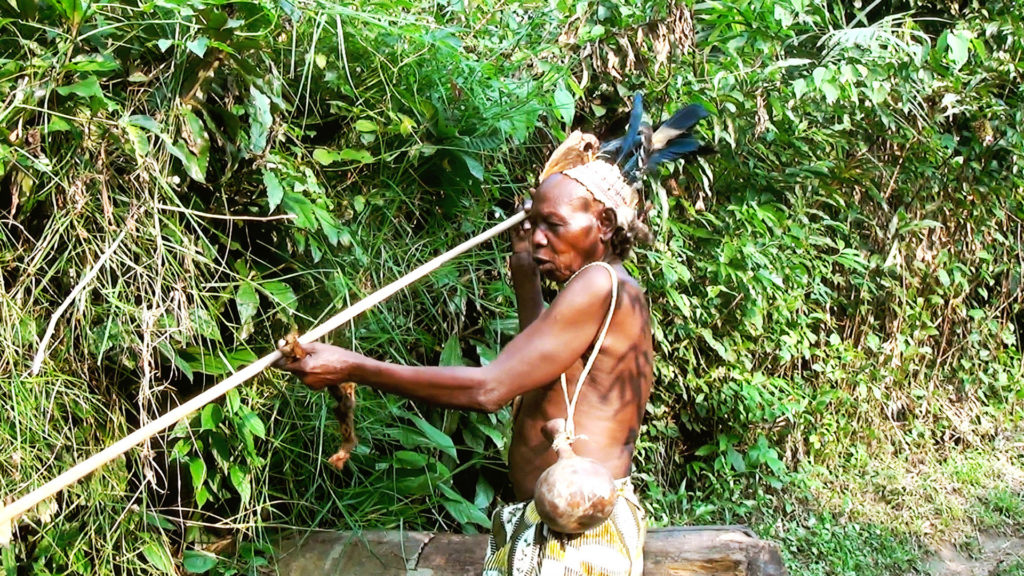 Chief Aluta, traditional Indigenous leader of the Bambuti-Babuluko community of Kisimbosa. Photo: Christian Chatelain
Chief Aluta, traditional Indigenous leader of the Bambuti-Babuluko community of Kisimbosa. Photo: Christian Chatelain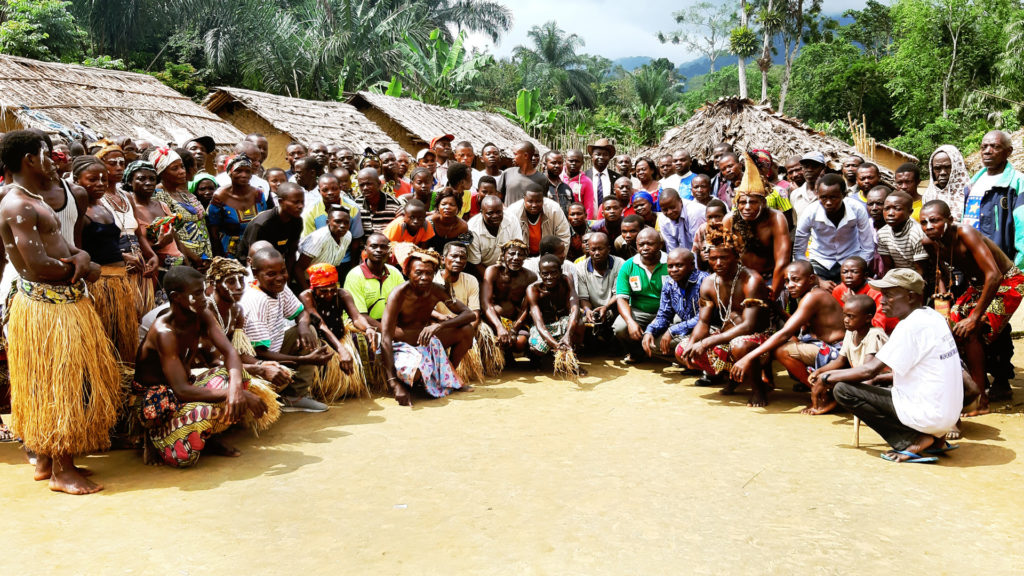 Group photo for the official handover of the legal title to secure the Kisimbosa forest. Photo: Joseph Itongwa
Group photo for the official handover of the legal title to secure the Kisimbosa forest. Photo: Joseph Itongwa
Ecuador
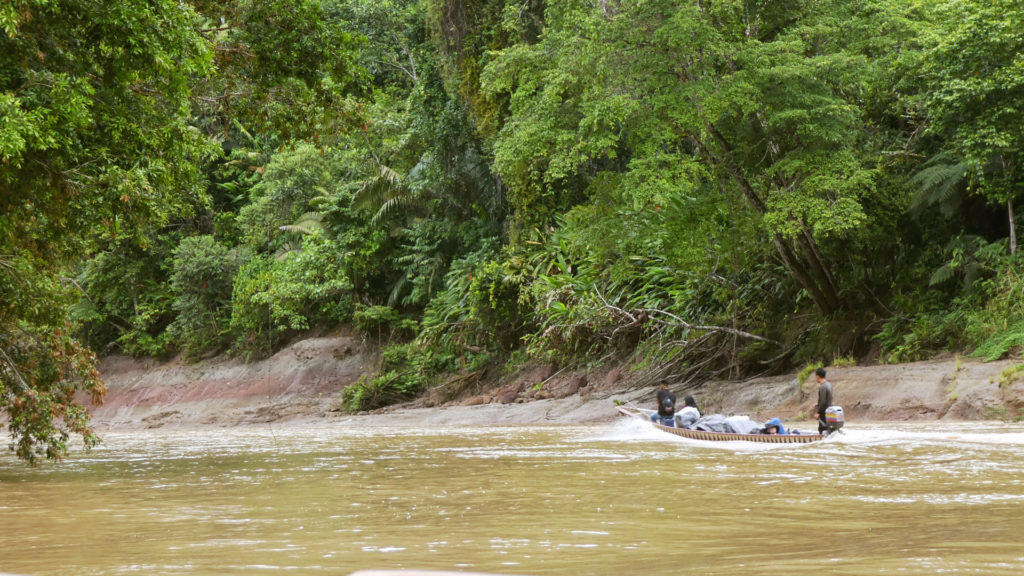 Río Bobonaza. Foto: Wachachik
Río Bobonaza. Foto: Wachachik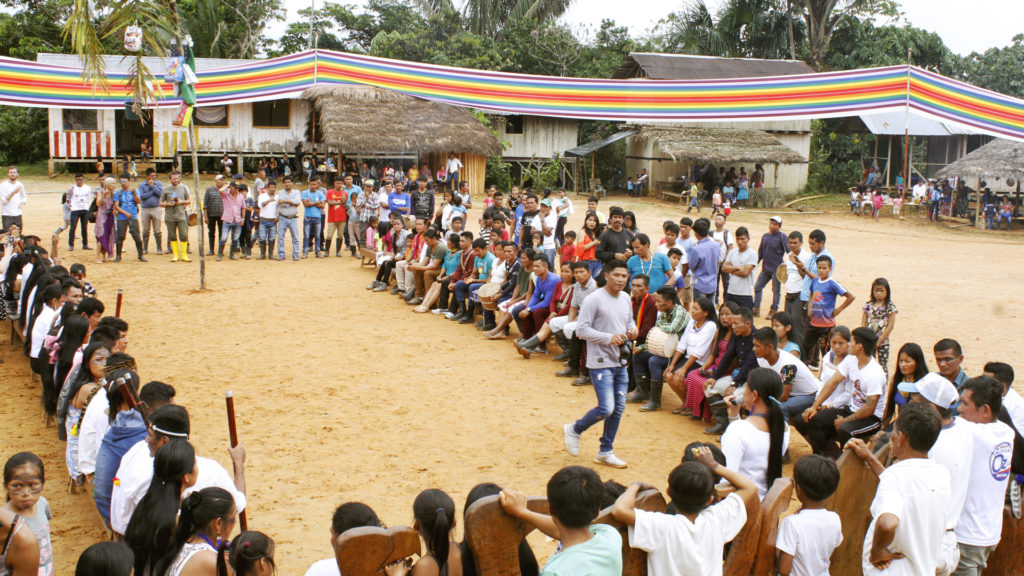 Posicionamiento de los Kurakas en la Pachamama (mayo 2019). Foto: Wachachik
Posicionamiento de los Kurakas en la Pachamama (mayo 2019). Foto: Wachachik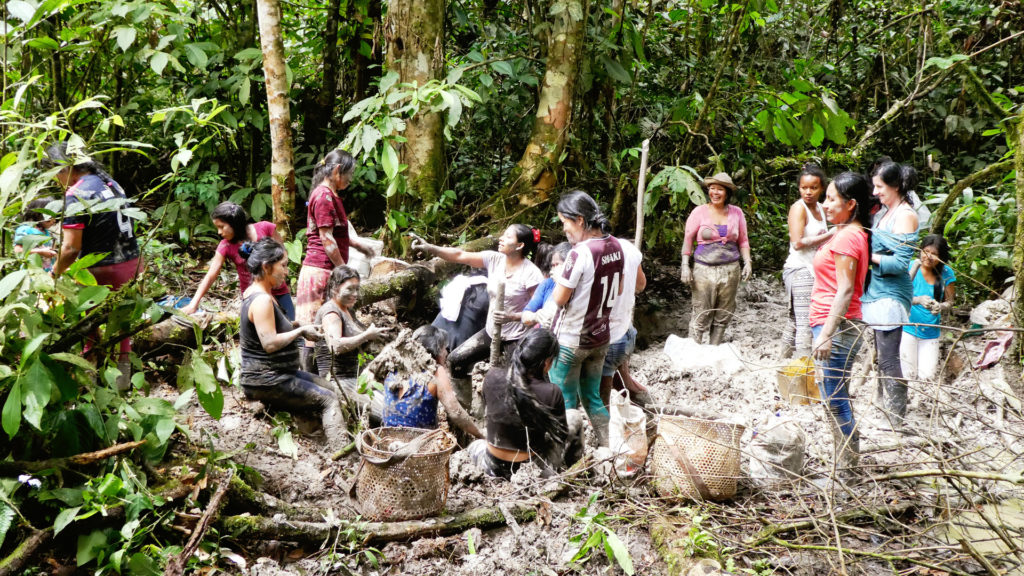 Mujeres recolectando el barro para las cerámicas. Foto: Wachachik
Mujeres recolectando el barro para las cerámicas. Foto: Wachachik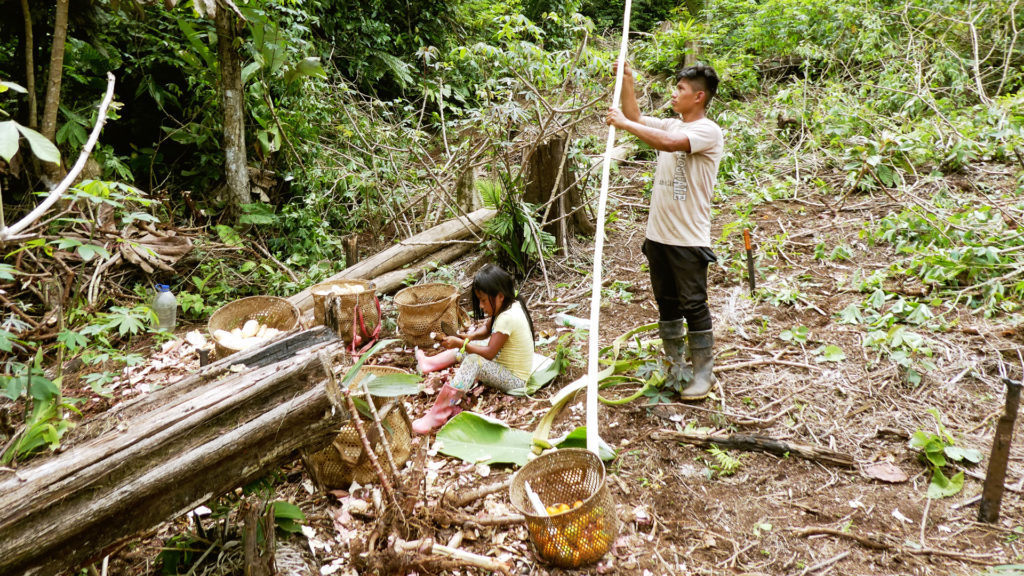 Niñez acompañando en la chacra. Foto: Wachachik
Niñez acompañando en la chacra. Foto: Wachachik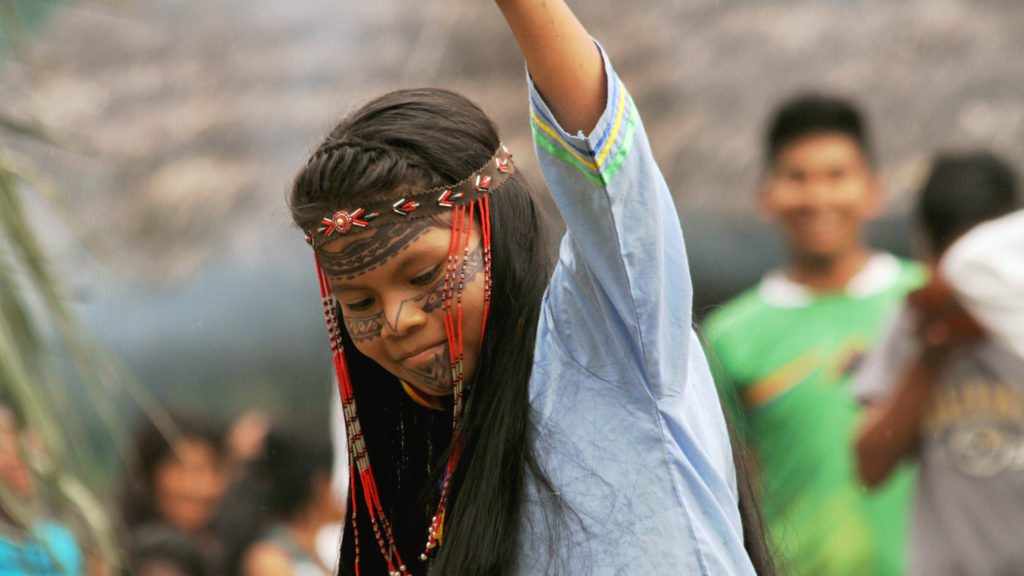 Aniversario de la asociación Atayak para la preservación de los saberes ancestrales (medicina, ciencia, arte, educación). Foto: Wachachik
Aniversario de la asociación Atayak para la preservación de los saberes ancestrales (medicina, ciencia, arte, educación). Foto: Wachachik
Guatemala
 The comunal forest of Totonicapán. Photo: Grazia Borrini-Feyerabend
The comunal forest of Totonicapán. Photo: Grazia Borrini-Feyerabend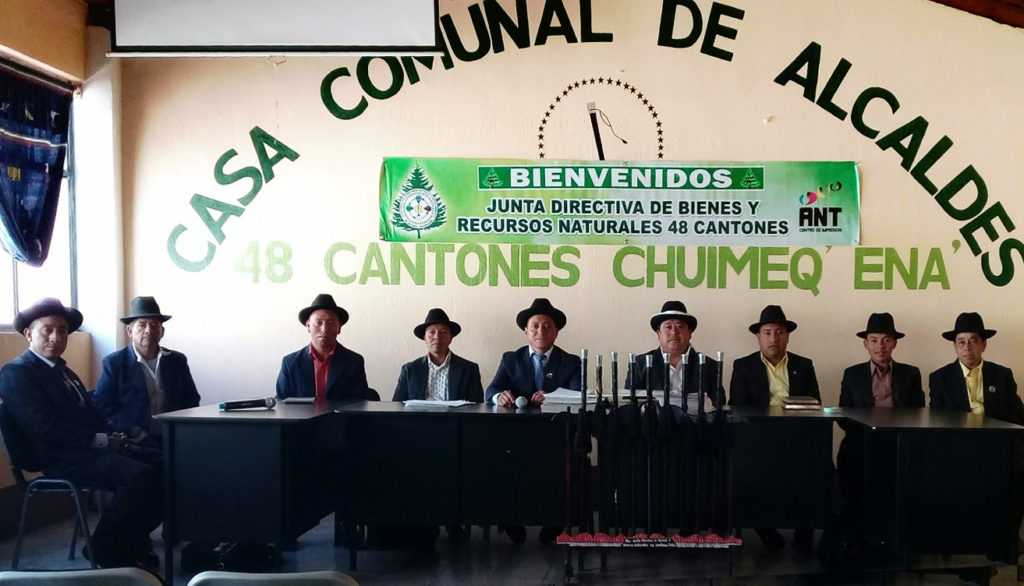 Junta directiva de los 48 Cantones de Totonicopán. Photo: German García
Junta directiva de los 48 Cantones de Totonicopán. Photo: German García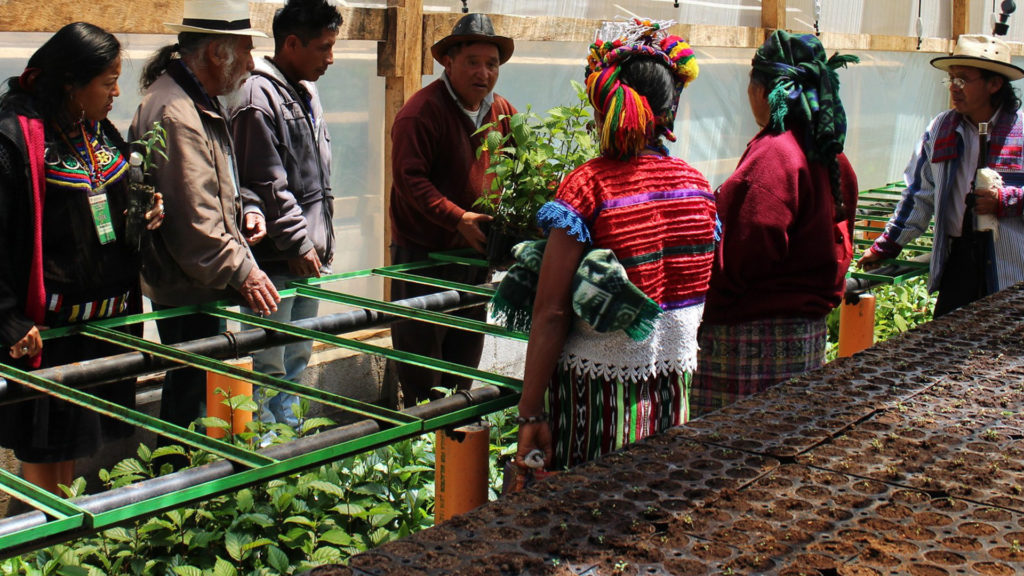 A visit to the communal tree nursery. Photo: Grazia Borrini-Feyerabend
A visit to the communal tree nursery. Photo: Grazia Borrini-Feyerabend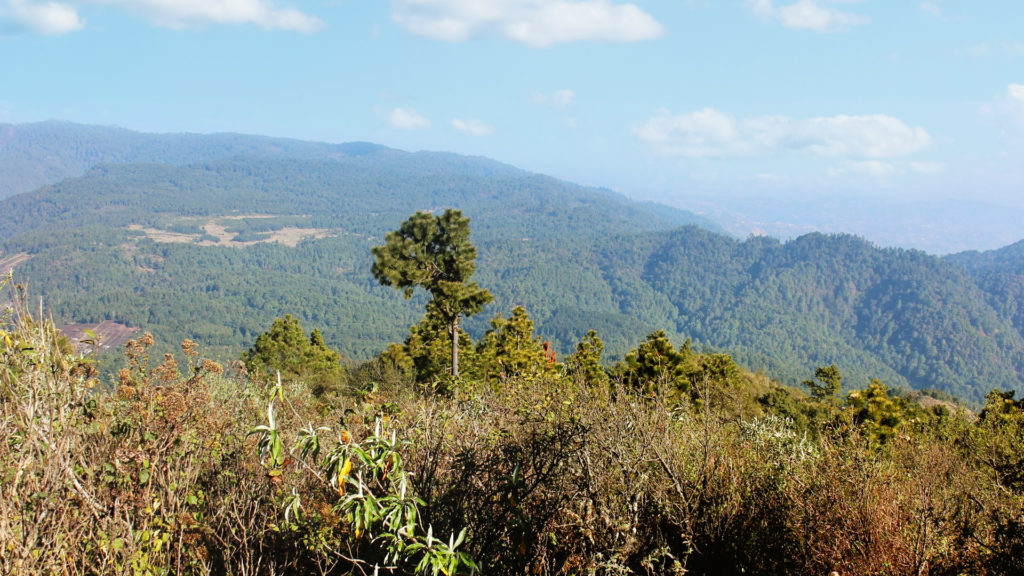 The comunal forest of Totonicapán. Photo: Grazia Borrini-Feyerabend
The comunal forest of Totonicapán. Photo: Grazia Borrini-Feyerabend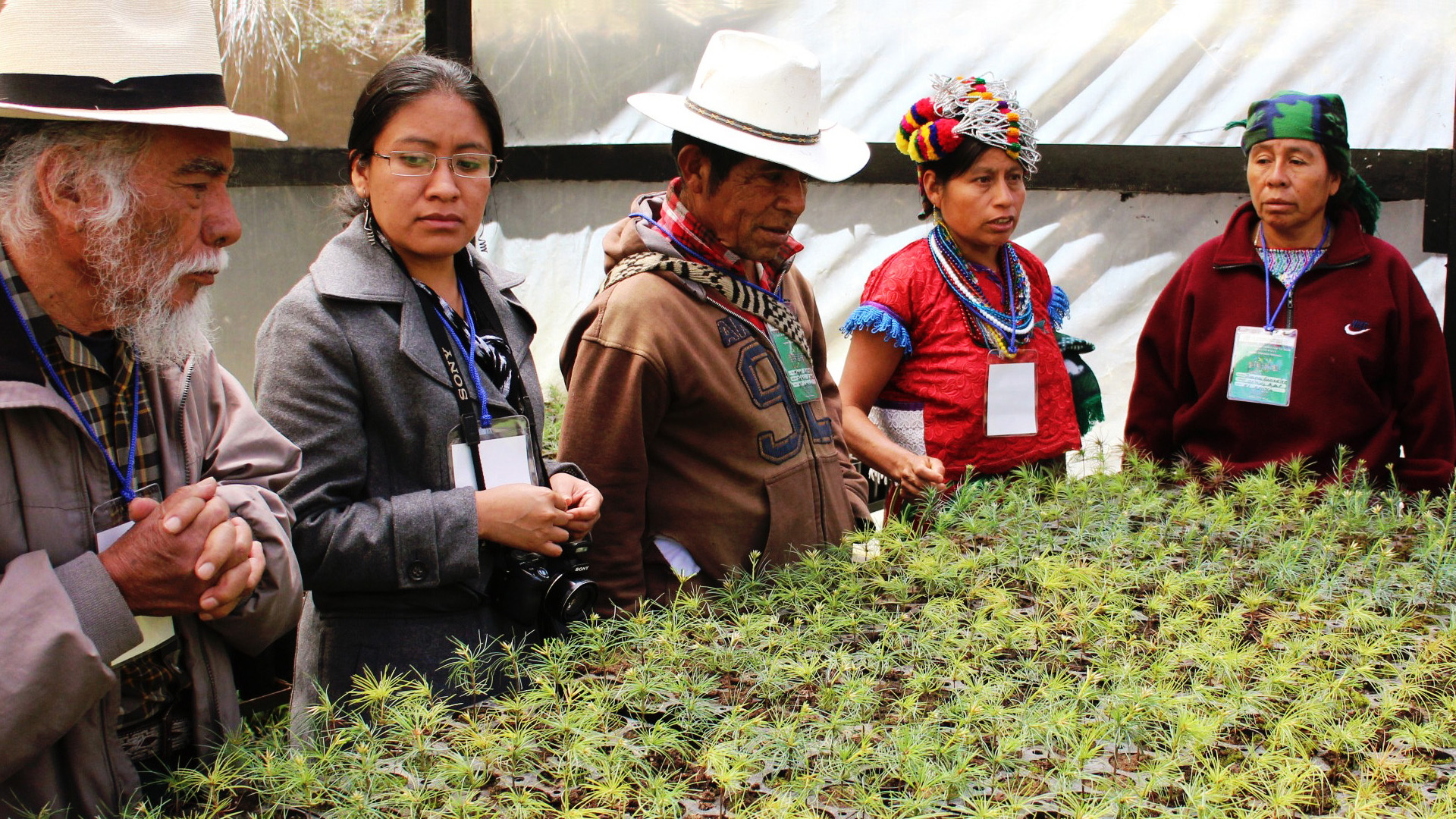 A visit to the communal tree nursery. Photo: Grazia Borrini-Feyerabend
A visit to the communal tree nursery. Photo: Grazia Borrini-Feyerabend
Guinea
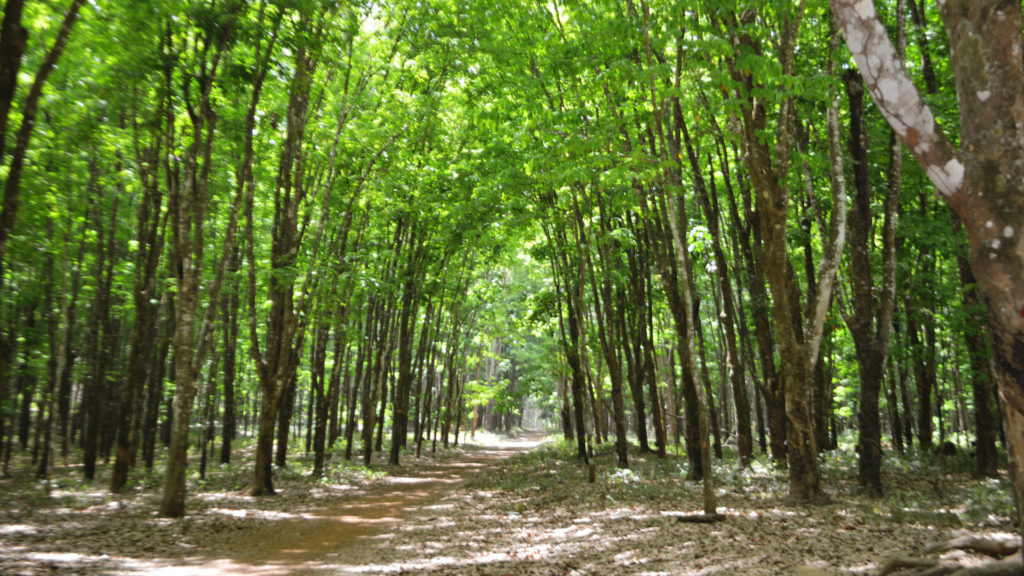 Photo: Jean Baptiste Koulemou
Photo: Jean Baptiste Koulemou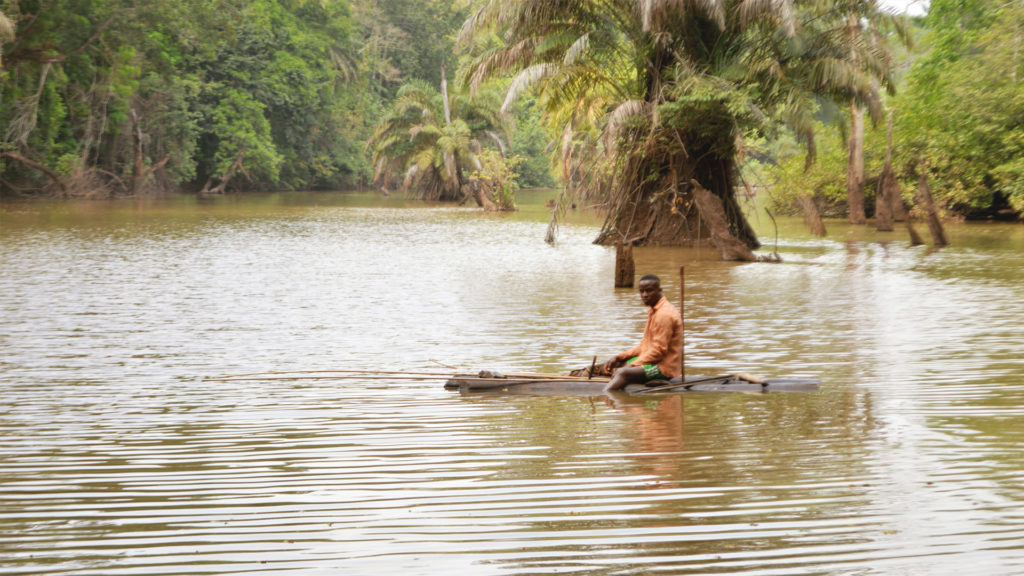 An ICCA Guardian on his raft. Photo: Jean Baptiste Koulemou
An ICCA Guardian on his raft. Photo: Jean Baptiste Koulemou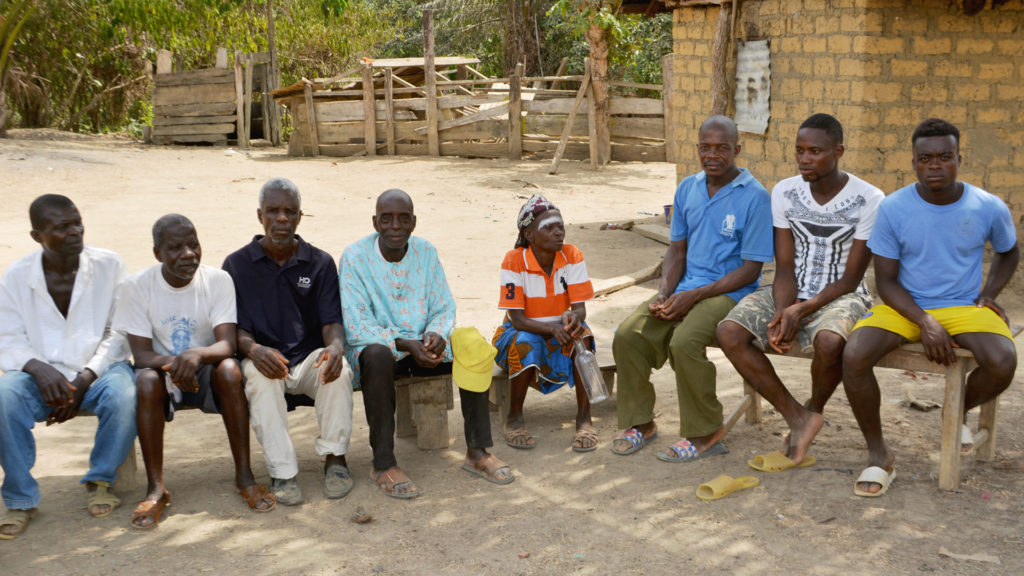 Women also participate in focus group meetings. Photo: Jean Baptiste Koulemou
Women also participate in focus group meetings. Photo: Jean Baptiste Koulemou
Indonesia
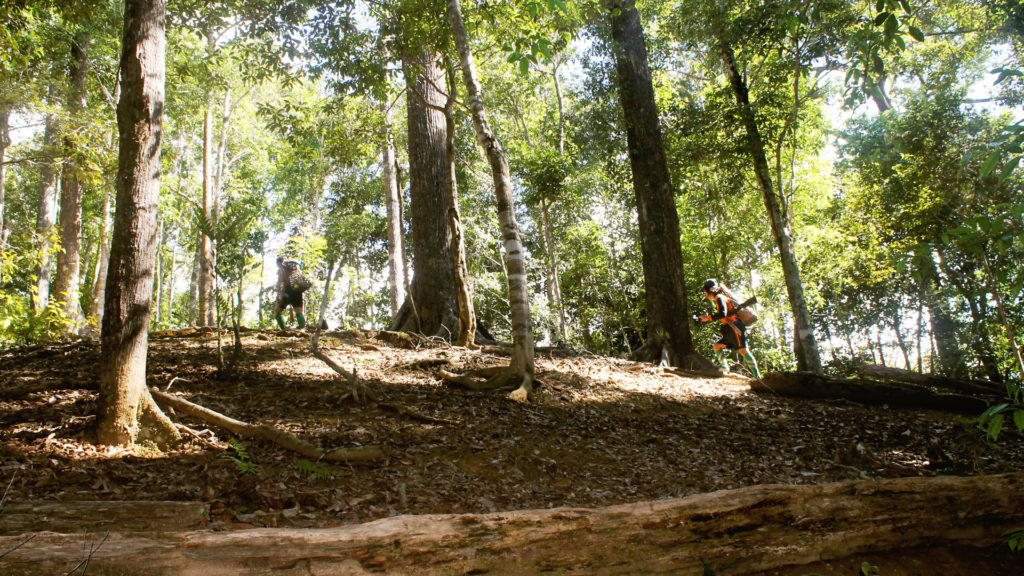 The primary forest in Tana Ulen Long Alango, Bahau Hulu. Photo: Andris Salo
The primary forest in Tana Ulen Long Alango, Bahau Hulu. Photo: Andris Salo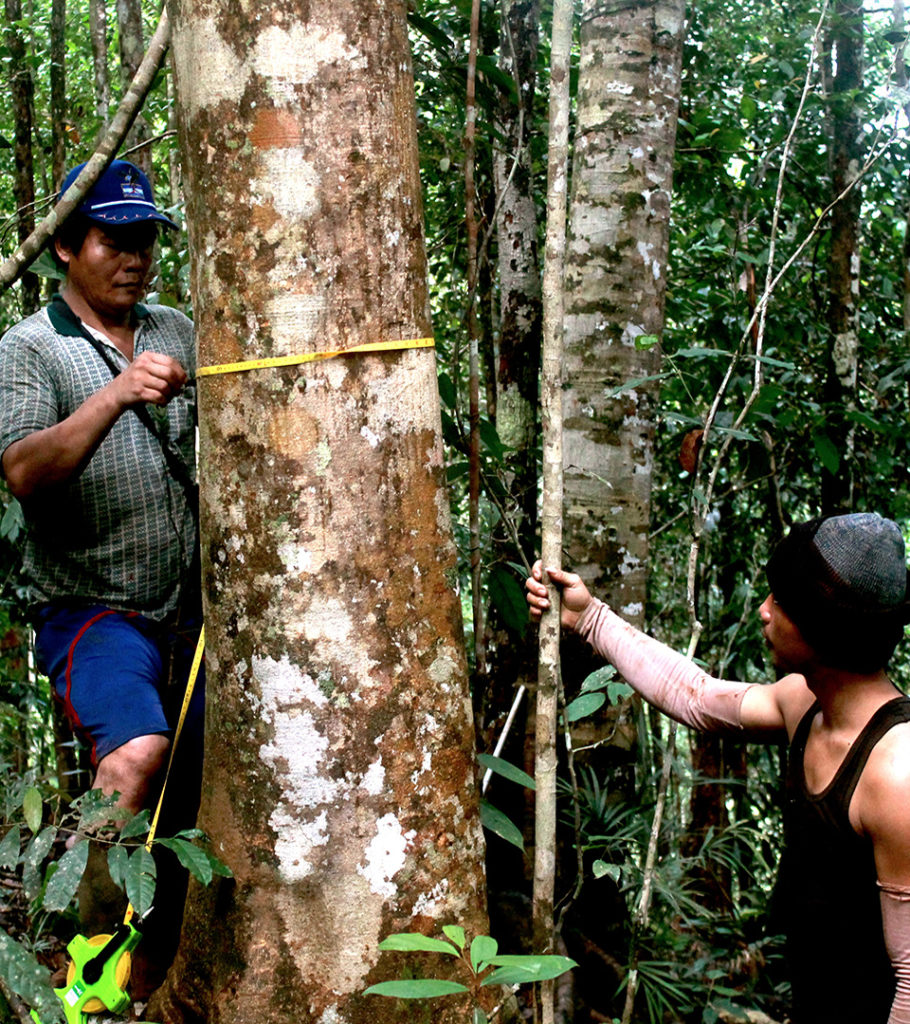 Measuring biodiversity in Tana Ulen. Photo: Andris Salo
Measuring biodiversity in Tana Ulen. Photo: Andris Salo
Iran
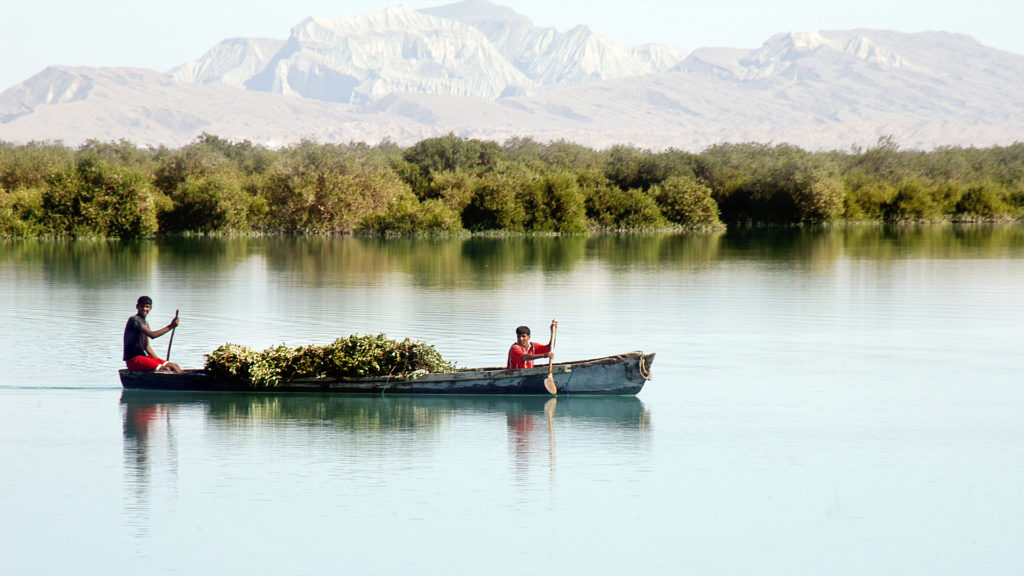 Sustainable use of Mangrove forest in Qeshm Island. Photo: Ramin Rohani
Sustainable use of Mangrove forest in Qeshm Island. Photo: Ramin Rohani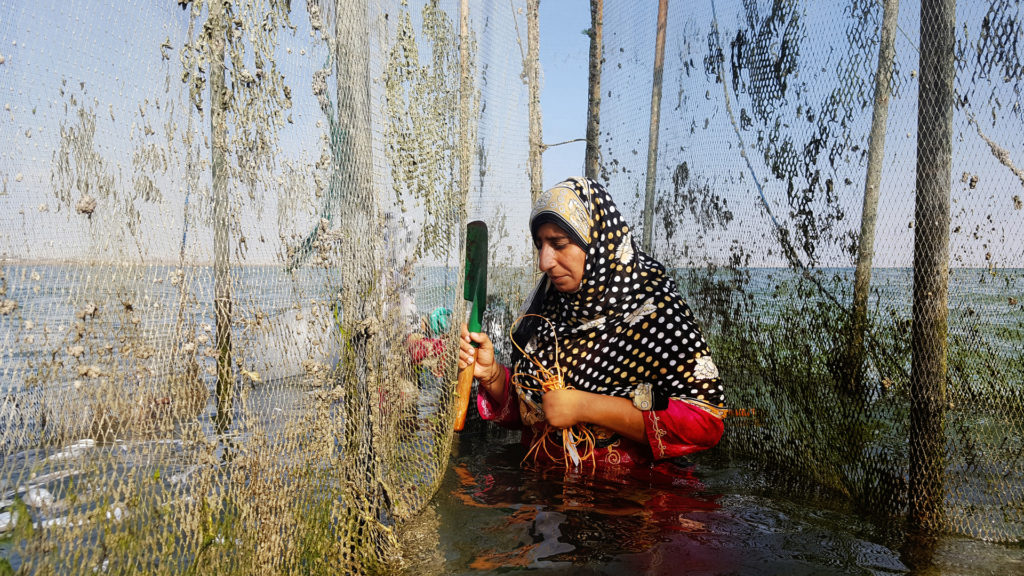 Traditional fishing of Qeshm Island indigenous women. Photo: Fatma Zolfaghari
Traditional fishing of Qeshm Island indigenous women. Photo: Fatma Zolfaghari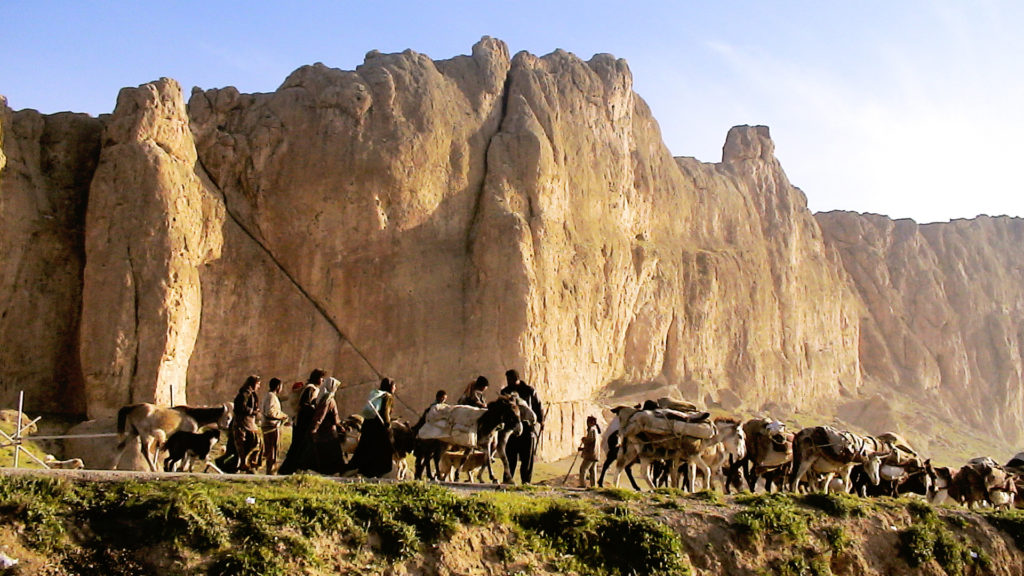 Seasonal migration of Qashqai, Fars. Photo: CENESTA
Seasonal migration of Qashqai, Fars. Photo: CENESTA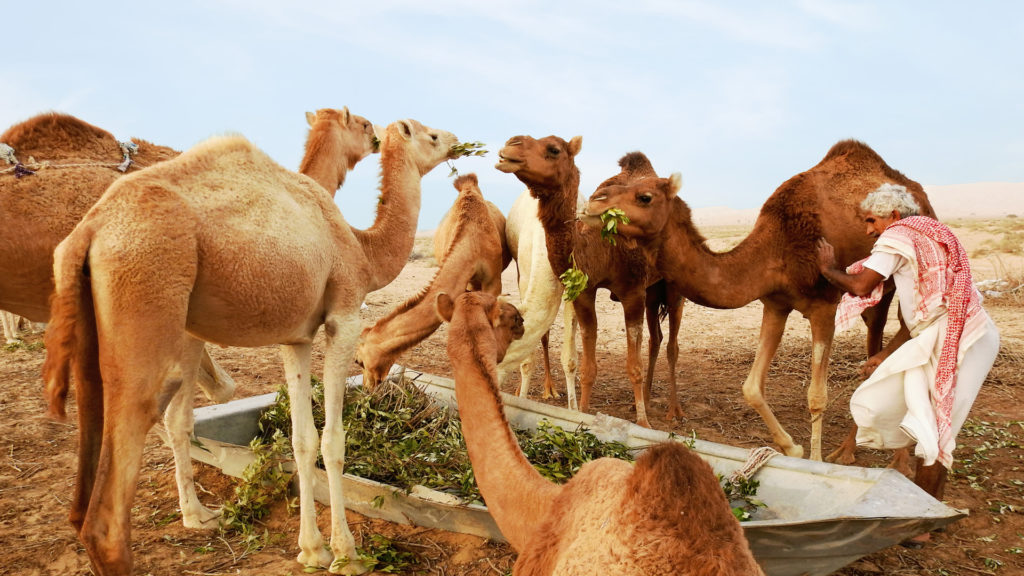 Dromedary camel in Qeshm Island (south of Iran). Photo: Fatma Zolfaghari
Dromedary camel in Qeshm Island (south of Iran). Photo: Fatma Zolfaghari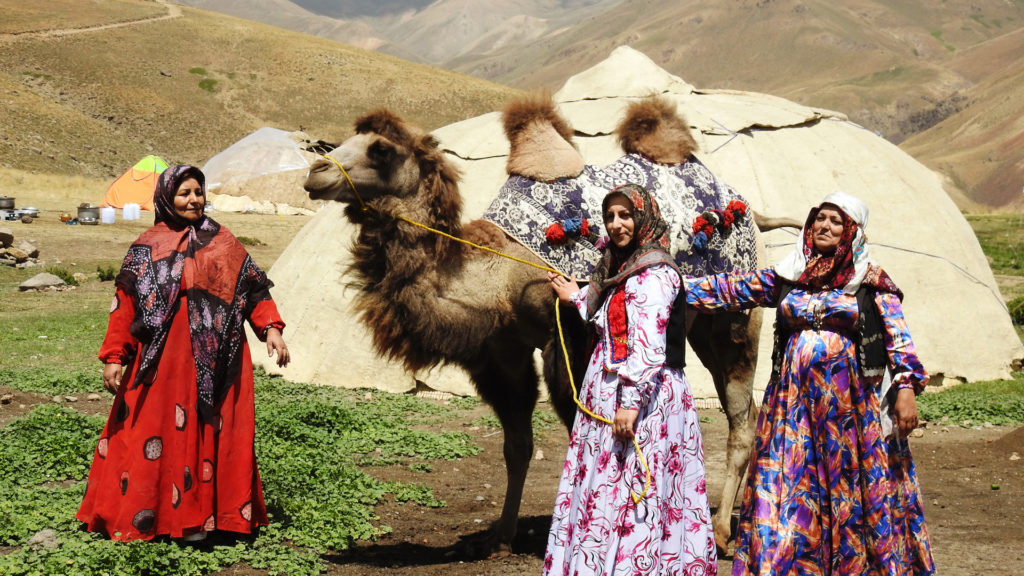 Bactrian Camel (two-humped) in Shahsevan territories (Northwest of Iran). Photo: Fatma Zolfaghari
Bactrian Camel (two-humped) in Shahsevan territories (Northwest of Iran). Photo: Fatma Zolfaghari
Madagascar
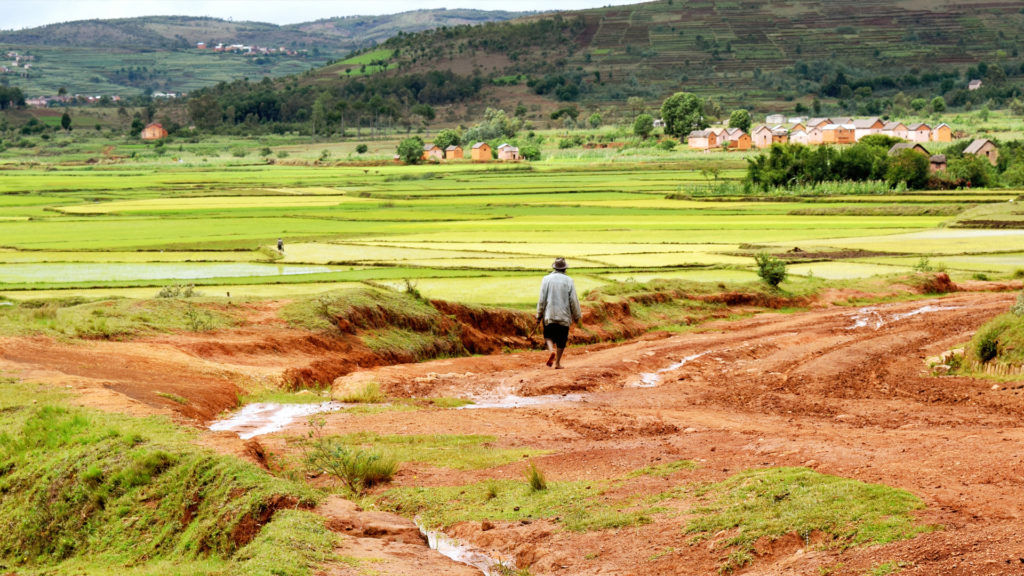 The road leading to the main entry of the Protected Area of Manjakatompo-Ankaratra. Photo: JRR
The road leading to the main entry of the Protected Area of Manjakatompo-Ankaratra. Photo: JRR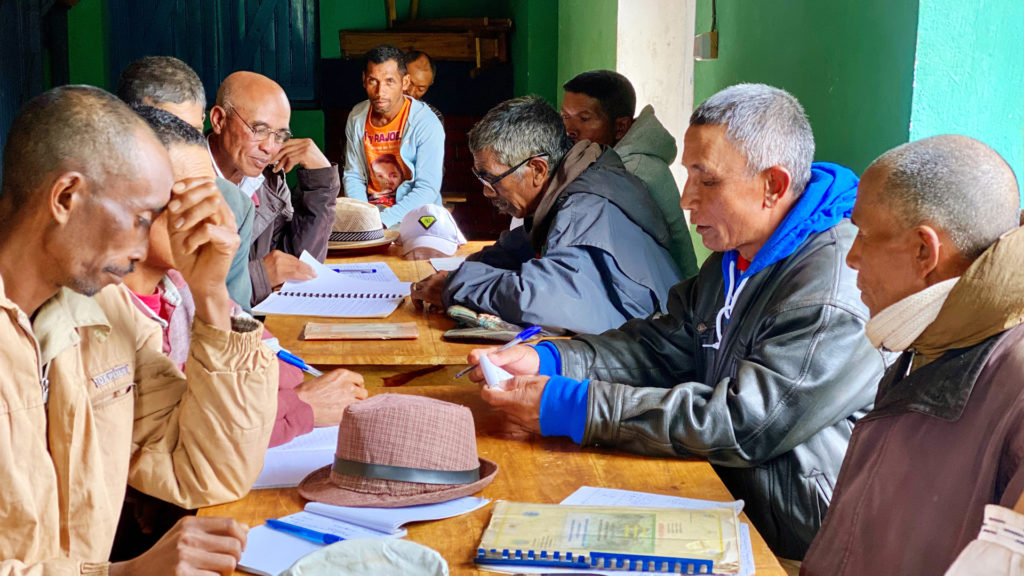 Discussion among community members during the monthly meeting to report results of community-led monitoring activities. Photo: JRR
Discussion among community members during the monthly meeting to report results of community-led monitoring activities. Photo: JRR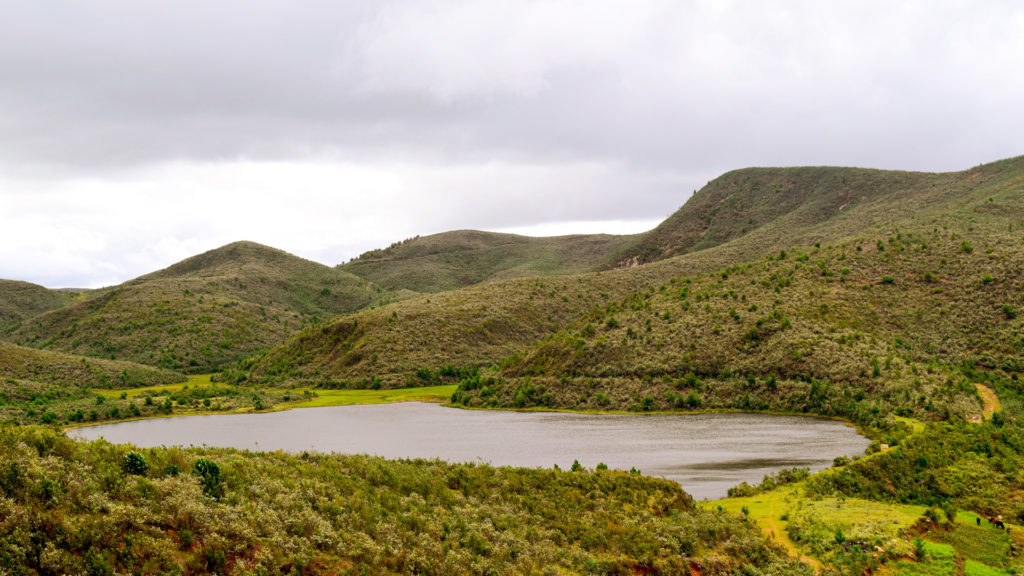 The ‘cold lake’ provides drinking water for the town of Ambatolampy. Photo: JRR
The ‘cold lake’ provides drinking water for the town of Ambatolampy. Photo: JRR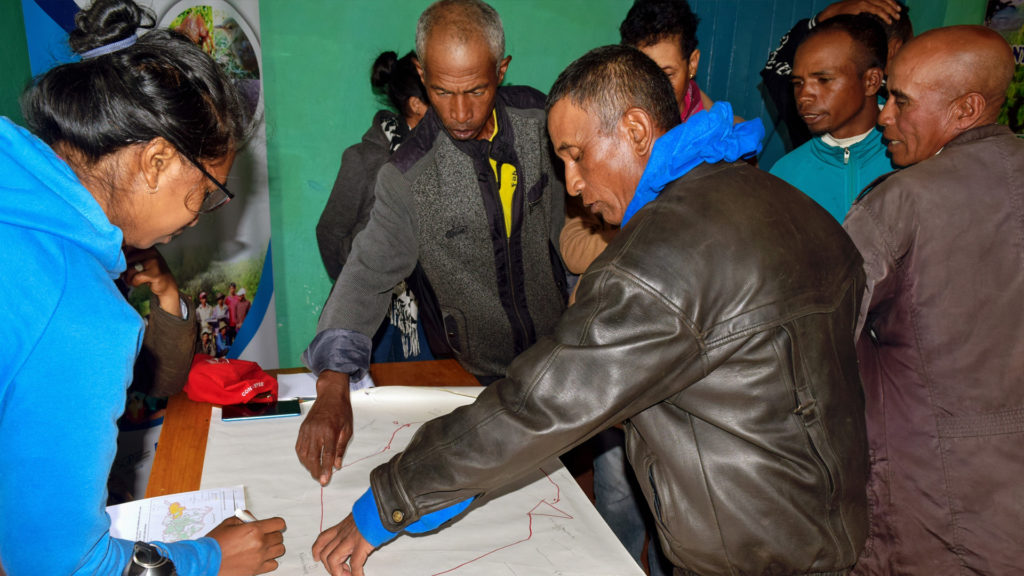 The Tangalamena, a representative of the forest department and community members indicating the territory of life delineation on sketch map. Photo: JRR
The Tangalamena, a representative of the forest department and community members indicating the territory of life delineation on sketch map. Photo: JRR
 A Madagascar’s small-scale fisher in a boat. Photo: MIHARI
A Madagascar’s small-scale fisher in a boat. Photo: MIHARI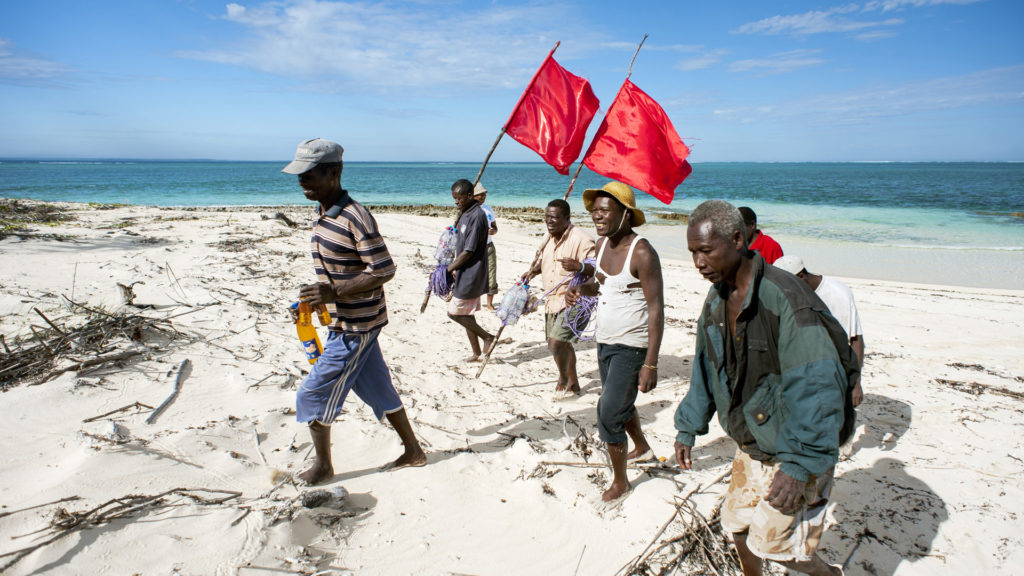 Community managed fishery closure in Andavadoaka, southwest Madagascar. Photo: Blue Ventures / Louise Jasper
Community managed fishery closure in Andavadoaka, southwest Madagascar. Photo: Blue Ventures / Louise Jasper Nosy Manandra – a sandbar in the Barren Isles, western Madagascar. Traditional migrant fishers live here for as long as the weather permits, leaving only during the cyclone season. They free dive for sea cucumbers and fish for sharks on the reefs farther out into the Mozambique Channel. It is only in remote areas such as this that fishers can still find sea cucumbers and catch large sharks. Despite having fished some of these areas for generations, traditional fishermen have no formal claim to them. Far offshore they occassionally cross foreign industrial longliners; illegal, industrial-scale teams use scuba to dive for sea cucumber and have stripped out the same reefs Vezo free-dive on; closer to shore there are undustrial shrimp trawlers scouring the seabed. While these newcomers severely undermine the resources traditional fishers survive on, the Vezo have no voice in trying to stop them. Marine Protected Areas and hotel developments have deprived migrant fishers of their fishing grounds and coerced them into leaving islands.
Nosy Manandra – a sandbar in the Barren Isles, western Madagascar. Traditional migrant fishers live here for as long as the weather permits, leaving only during the cyclone season. They free dive for sea cucumbers and fish for sharks on the reefs farther out into the Mozambique Channel. It is only in remote areas such as this that fishers can still find sea cucumbers and catch large sharks. Despite having fished some of these areas for generations, traditional fishermen have no formal claim to them. Far offshore they occassionally cross foreign industrial longliners; illegal, industrial-scale teams use scuba to dive for sea cucumber and have stripped out the same reefs Vezo free-dive on; closer to shore there are undustrial shrimp trawlers scouring the seabed. While these newcomers severely undermine the resources traditional fishers survive on, the Vezo have no voice in trying to stop them. Marine Protected Areas and hotel developments have deprived migrant fishers of their fishing grounds and coerced them into leaving islands.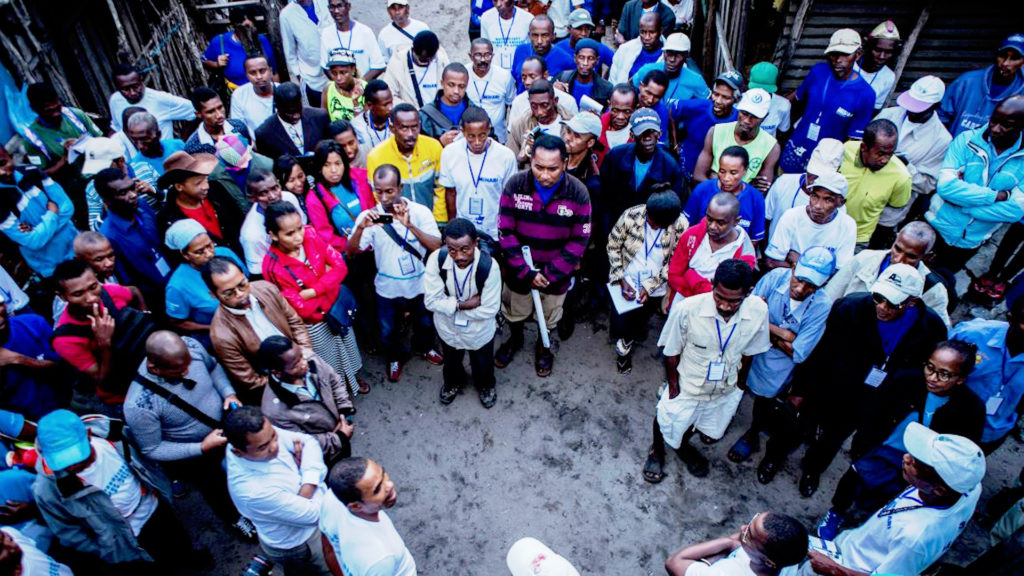 LMMA leaders visiting new initiatives in coastal areas of Madagascar. Photo: MIHARI
LMMA leaders visiting new initiatives in coastal areas of Madagascar. Photo: MIHARI
Myanmar
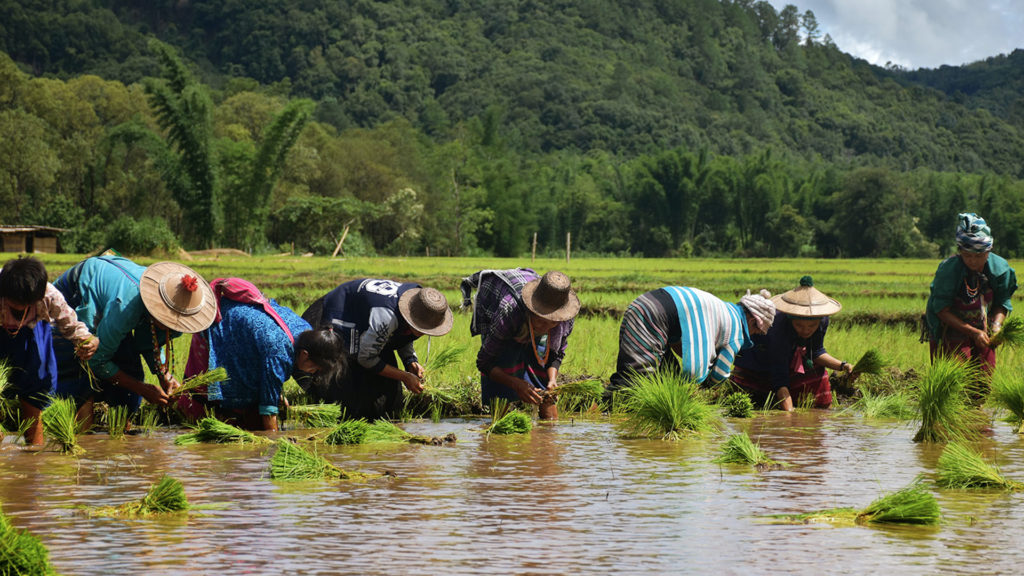 Traditional agriculture in the Kaw. The Kaw is simultaneously a physical place, a unit of land administration, and a social system, including the cultural, political, and social traditions and customary practices of the Karen people that have been practiced for generations. Photo: KESAN
Traditional agriculture in the Kaw. The Kaw is simultaneously a physical place, a unit of land administration, and a social system, including the cultural, political, and social traditions and customary practices of the Karen people that have been practiced for generations. Photo: KESAN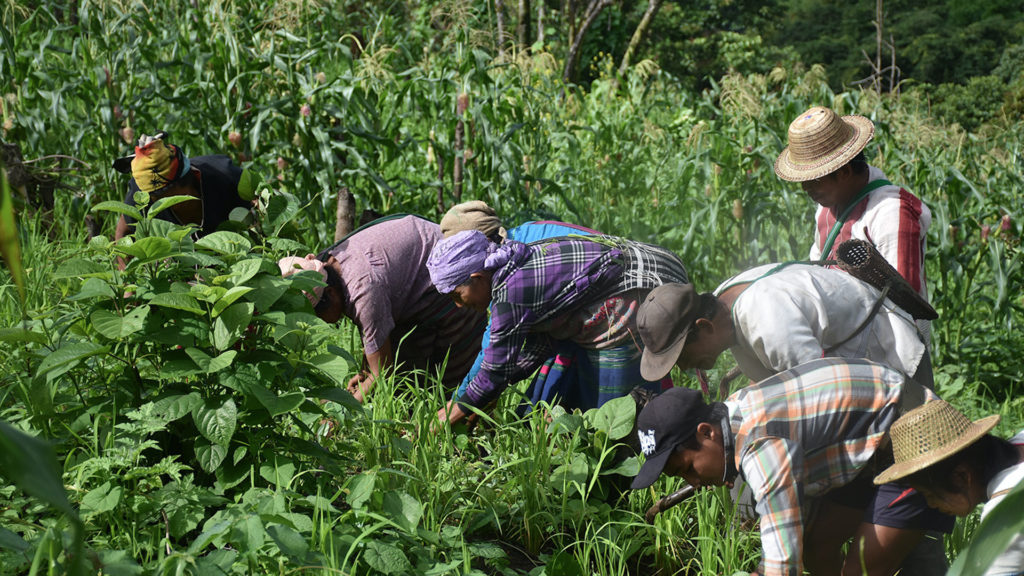 Traditional agriculture in the Kaw. The Kaw is simultaneously a physical place, a unit of land administration, and a social system, including the cultural, political, and social traditions and customary practices of the Karen people that have been practiced for generations. Photo: KESAN
Traditional agriculture in the Kaw. The Kaw is simultaneously a physical place, a unit of land administration, and a social system, including the cultural, political, and social traditions and customary practices of the Karen people that have been practiced for generations. Photo: KESAN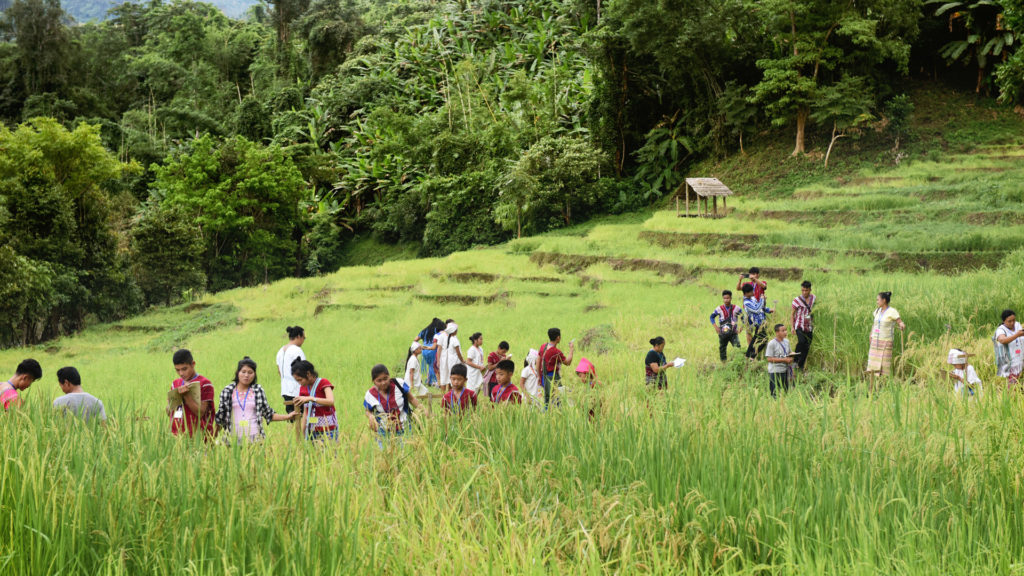 Youth exchange in the field. Photo: KESAN
Youth exchange in the field. Photo: KESAN Youth learning how to make traditional textiles from an elder. Photo: KESAN
Youth learning how to make traditional textiles from an elder. Photo: KESAN Commemoration of International Day of Action for Rivers and Against Dams. Photo: KESAN
Commemoration of International Day of Action for Rivers and Against Dams. Photo: KESAN
Nepal
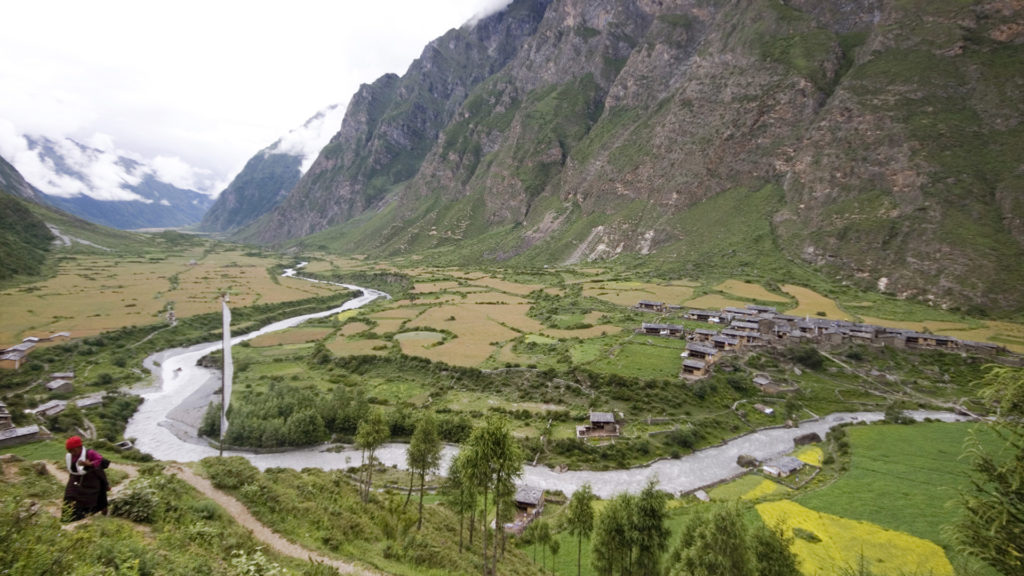 Nilley and Chuley villages in the Upper Tsum. Photo: Lopsang Chiring Lama
Nilley and Chuley villages in the Upper Tsum. Photo: Lopsang Chiring Lama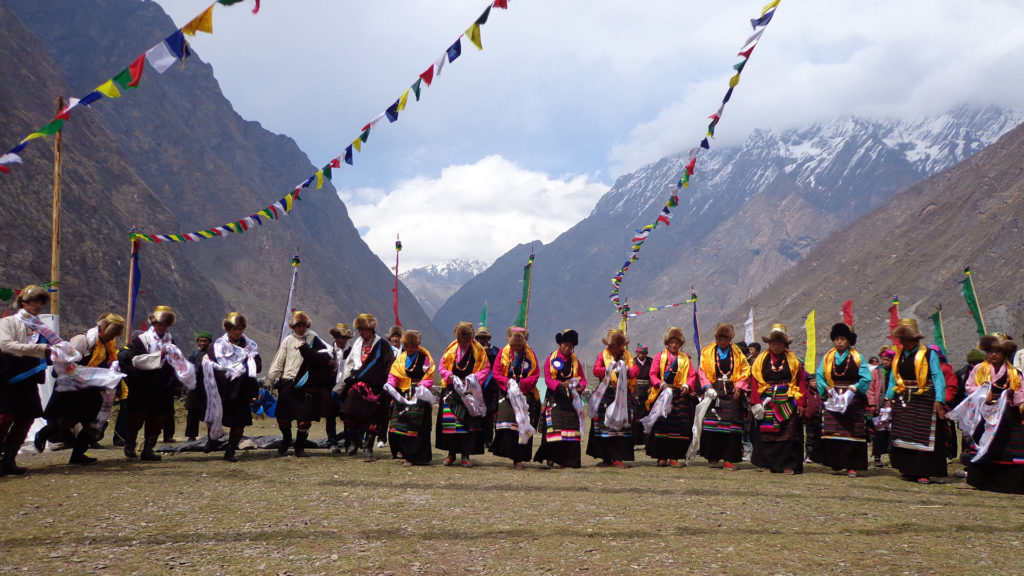 Tsumba people performing cultural dances in first Shyagya festival in 2009 in Upper Tsum. Photo: Madhu Chettri
Tsumba people performing cultural dances in first Shyagya festival in 2009 in Upper Tsum. Photo: Madhu Chettri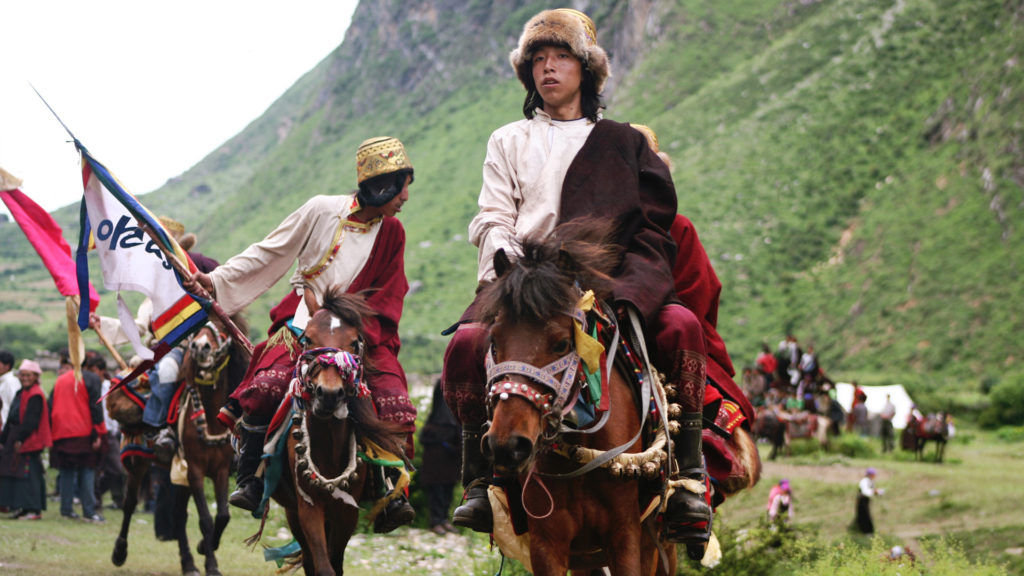 Horse riding organized in first Shyagya Festival in 2009 in Upper Tsum. Photo: Lopsang Chiring Lama
Horse riding organized in first Shyagya Festival in 2009 in Upper Tsum. Photo: Lopsang Chiring Lama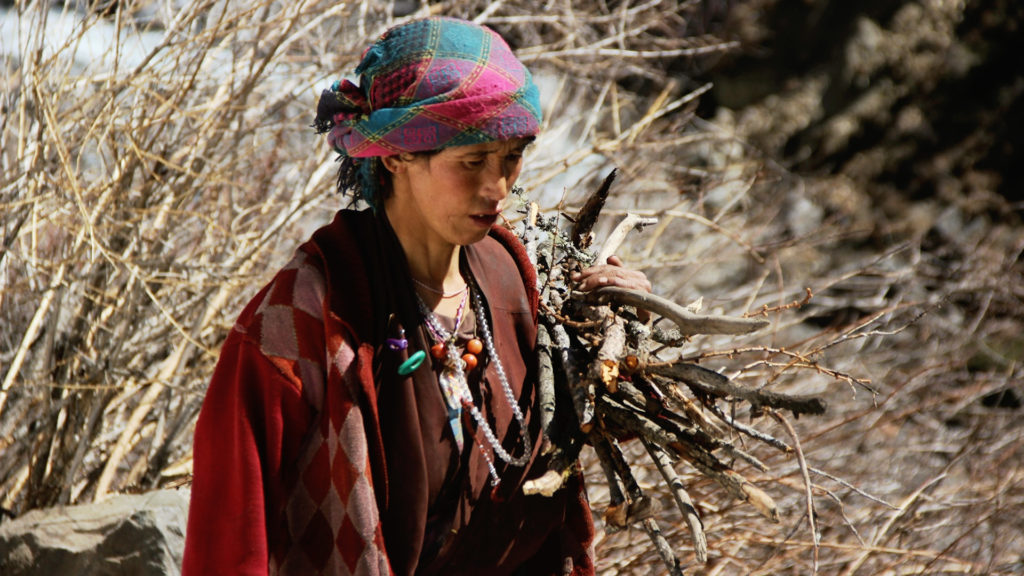 Photo: Christian Chatelain
Photo: Christian Chatelain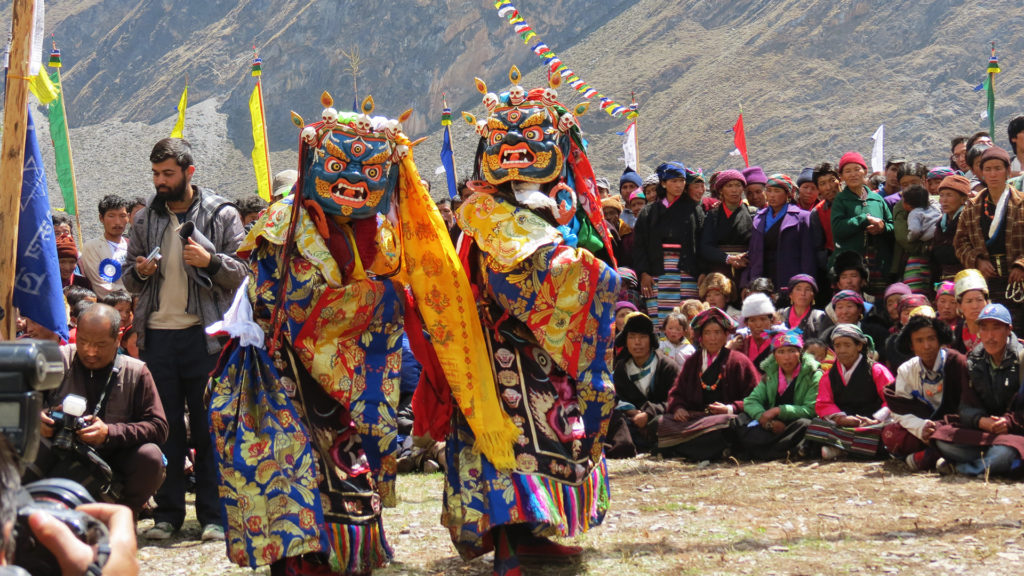 Cultural Dances performed in Shyagya Festival 2012. Photo: Madhu Chettri
Cultural Dances performed in Shyagya Festival 2012. Photo: Madhu Chettri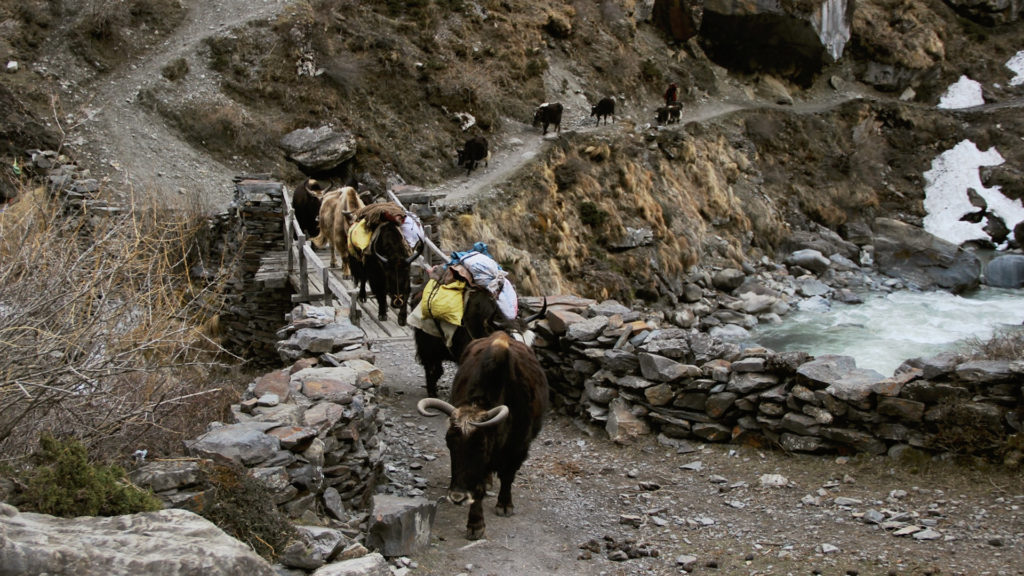 Photo: Christian Chatelain
Photo: Christian Chatelain
Peru
 A family fishes in the upper ‘quebrada’ Ayampis, one of the many tributaries of Rio Santiago. Photo: Jacob Balzani Lööv
A family fishes in the upper ‘quebrada’ Ayampis, one of the many tributaries of Rio Santiago. Photo: Jacob Balzani Lööv A group of youth is entering the forest for three days of fasting and spiritual ‘vision seeking’ in the Kampankias sacred hills. Photo: Jacob Balzani Lööv
A group of youth is entering the forest for three days of fasting and spiritual ‘vision seeking’ in the Kampankias sacred hills. Photo: Jacob Balzani Lööv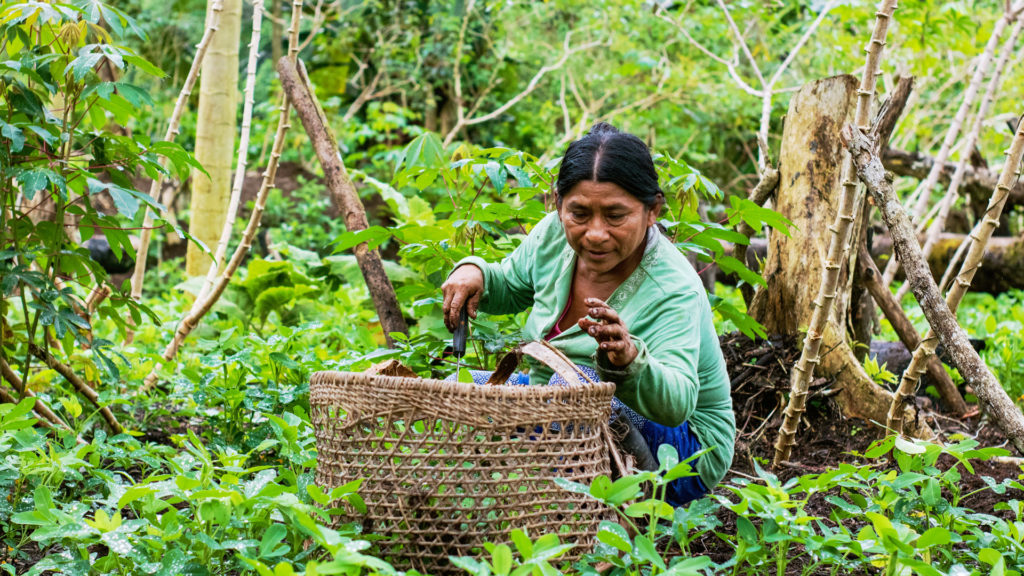 Carmen Pirucho, Sabia from Soledad community working at her chacra. Photo: Candy López
Carmen Pirucho, Sabia from Soledad community working at her chacra. Photo: Candy López
Philippines
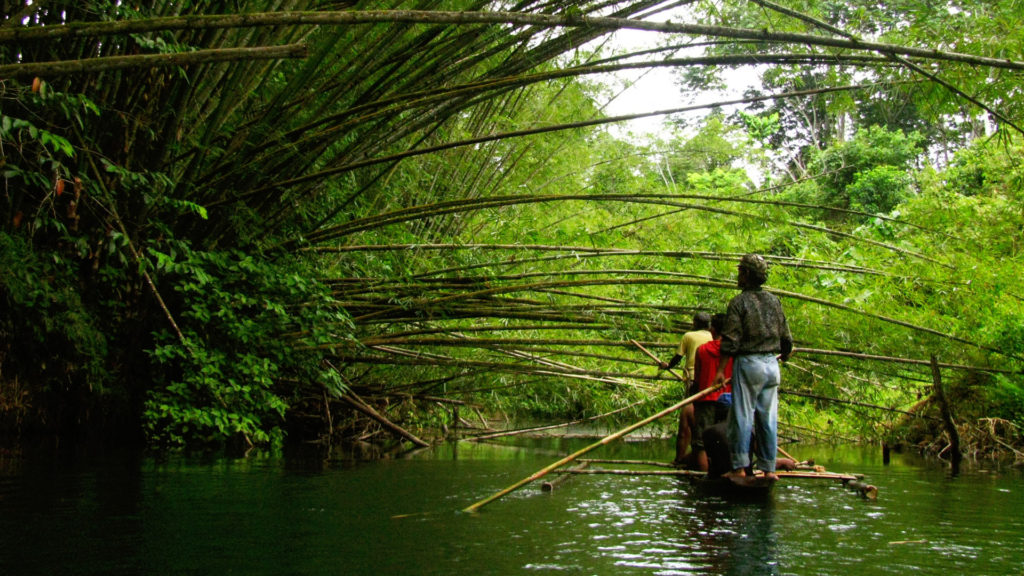 One of the many rivers in the Pangasananan territory. Aside from being fishing grounds, rivers are a main means of transport. Photo: Glaiza Tabanao
One of the many rivers in the Pangasananan territory. Aside from being fishing grounds, rivers are a main means of transport. Photo: Glaiza Tabanao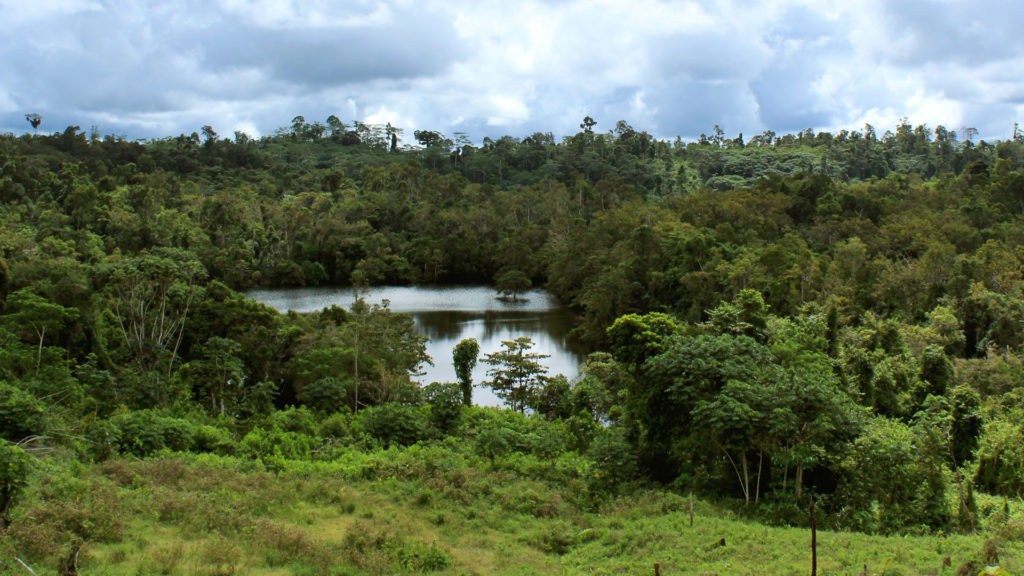 According to the Manobo, the sacred lake Danao used to be completely surrounded by a thick forest but migrant farmers have encroached the area. The Manobo requested they do not continue farming in the area as this is within their territory and is considered sacred. The migrants refused to leave, accused the Manobo of harrassment and went to the local government office to file a complaint. Photo: Glaiza Tabanao
According to the Manobo, the sacred lake Danao used to be completely surrounded by a thick forest but migrant farmers have encroached the area. The Manobo requested they do not continue farming in the area as this is within their territory and is considered sacred. The migrants refused to leave, accused the Manobo of harrassment and went to the local government office to file a complaint. Photo: Glaiza Tabanao The Tinuy-an Falls is a 3-tiered, 55-meter high, and 95-meter wide curtain of water surrounded by luscious forests, which has become a famous tourist destination. It received its name from a Manobo story about driving away a group of cruel slave traders that raided their territory centuries ago. Photo: Glaiza Tabanao. Photo: Glaiza Tabanao
The Tinuy-an Falls is a 3-tiered, 55-meter high, and 95-meter wide curtain of water surrounded by luscious forests, which has become a famous tourist destination. It received its name from a Manobo story about driving away a group of cruel slave traders that raided their territory centuries ago. Photo: Glaiza Tabanao. Photo: Glaiza Tabanao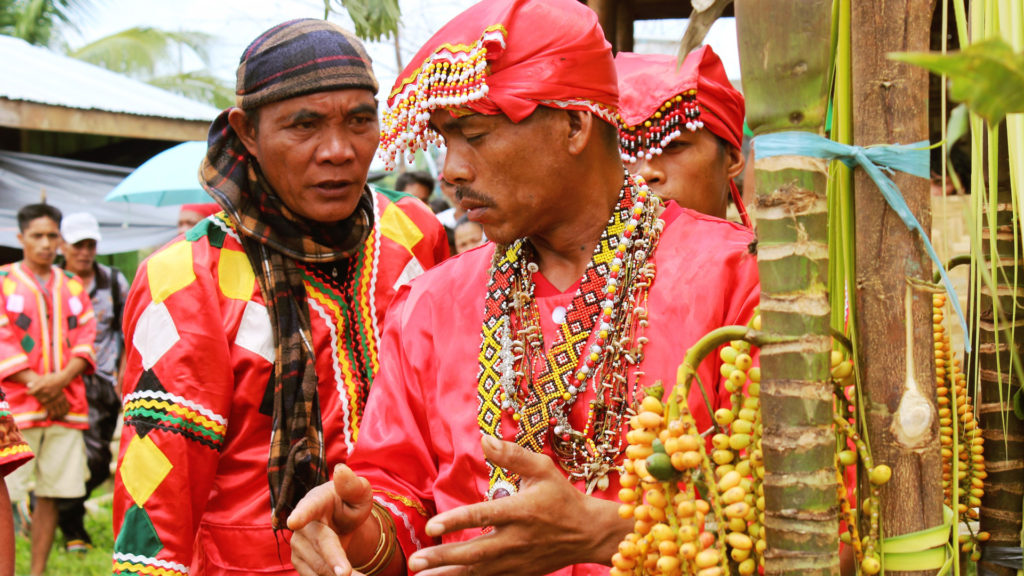 The Baylan (man in front), here possessed by a spirit, conversed with Hawudon Tinuy-an (man with brown head cover) during a ritual. Photo: Kim Reina Toyongan
The Baylan (man in front), here possessed by a spirit, conversed with Hawudon Tinuy-an (man with brown head cover) during a ritual. Photo: Kim Reina Toyongan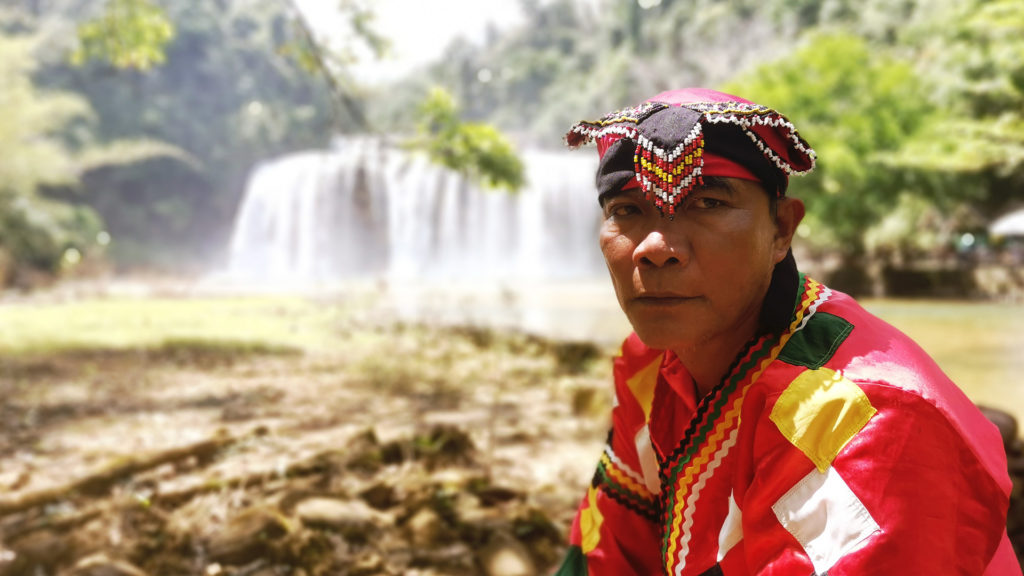 Hawudon Tinuy-an Alfredo Domogoy, a chief of the Manobo in Mindanao, received his name from iconic falls behind him. Photo: Glaiza Tabanao
Hawudon Tinuy-an Alfredo Domogoy, a chief of the Manobo in Mindanao, received his name from iconic falls behind him. Photo: Glaiza Tabanao
Romania
 The Dungo open air baths, built from commons revenue, during winter, credits George Iordăchescu
The Dungo open air baths, built from commons revenue, during winter, credits George Iordăchescu The community attending the opening of the Chestnut Festival, credits Orbán Csaba
The community attending the opening of the Chestnut Festival, credits Orbán Csaba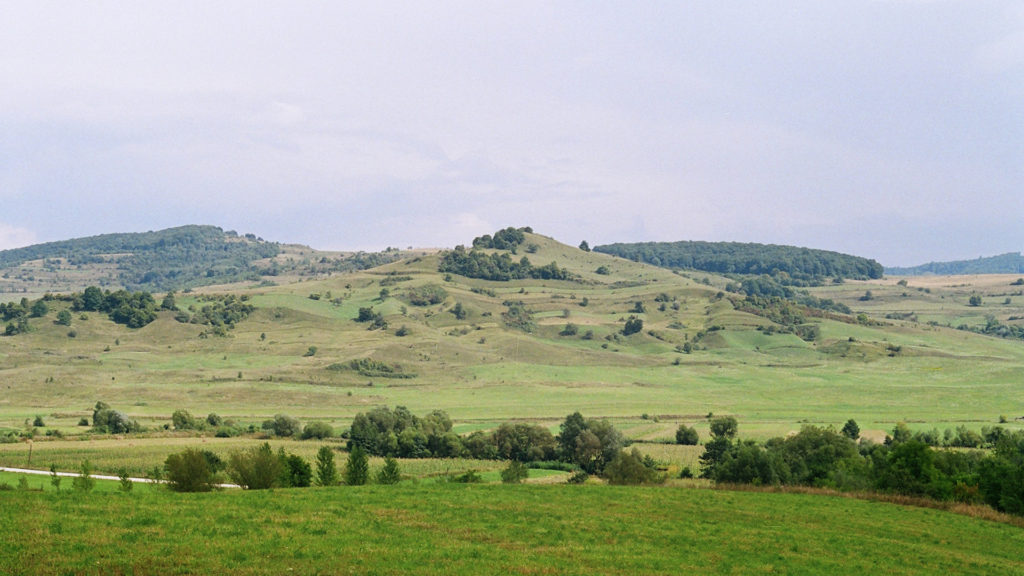 Commons woody pastures, credits Anna Varga
Commons woody pastures, credits Anna Varga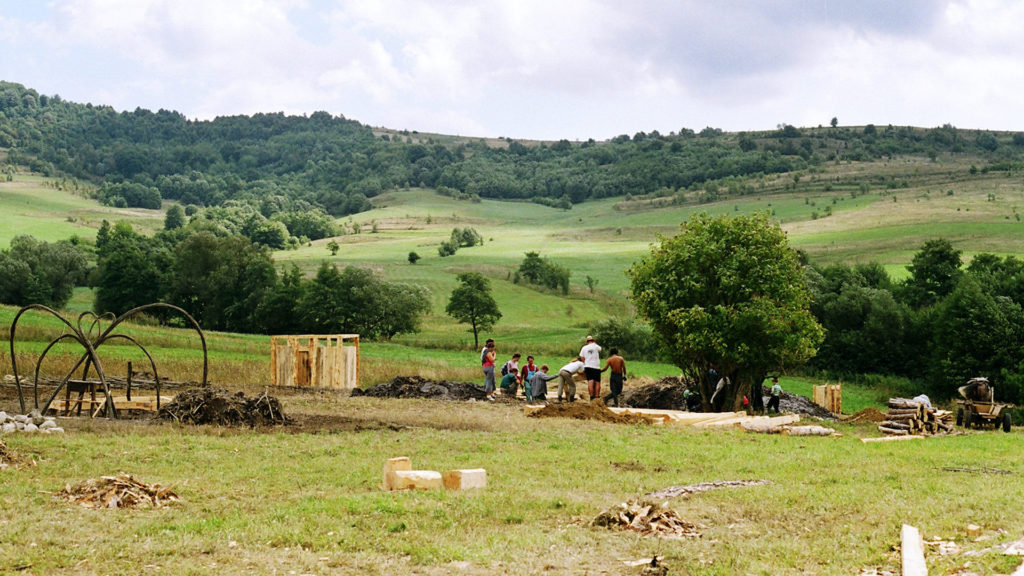 Building the Dungo Spa Community Baths in 2006, credits Anna Varga
Building the Dungo Spa Community Baths in 2006, credits Anna Varga
Senegal
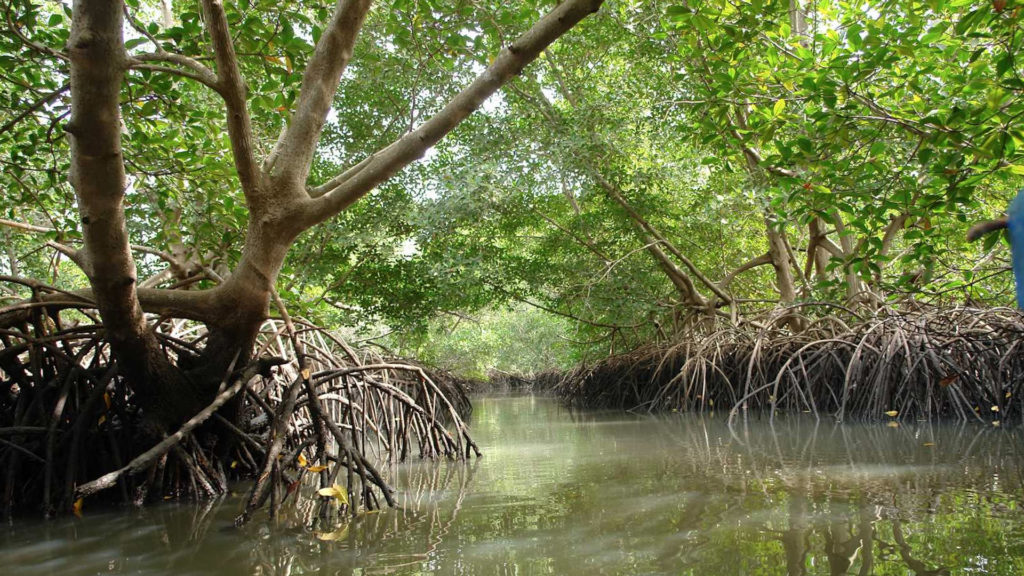 Photo: Christian Chatelain
Photo: Christian Chatelain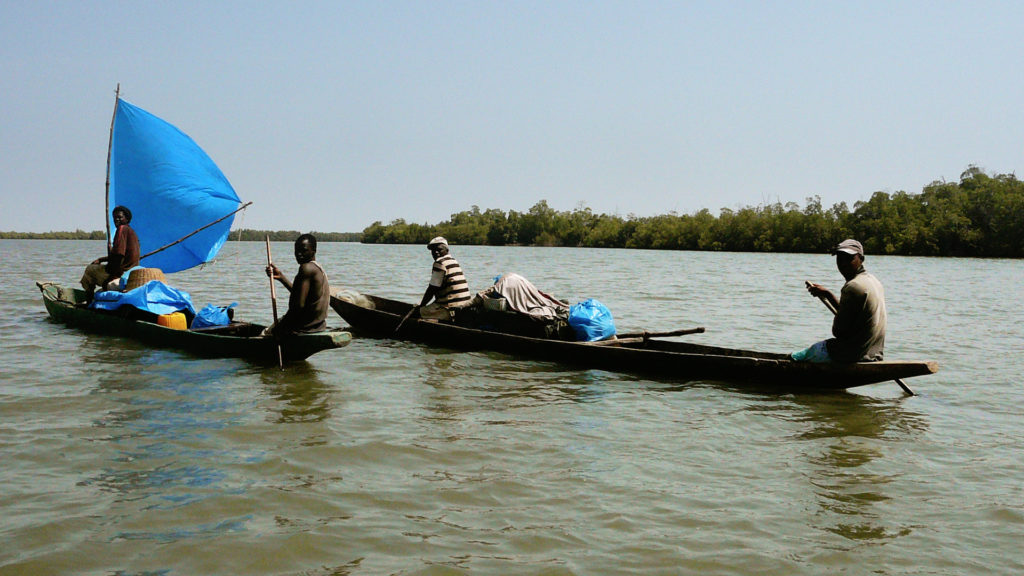 Photo: Grazia Borrini-Feyerabend
Photo: Grazia Borrini-Feyerabend Photo: Grazia Borrini-Feyerabend
Photo: Grazia Borrini-Feyerabend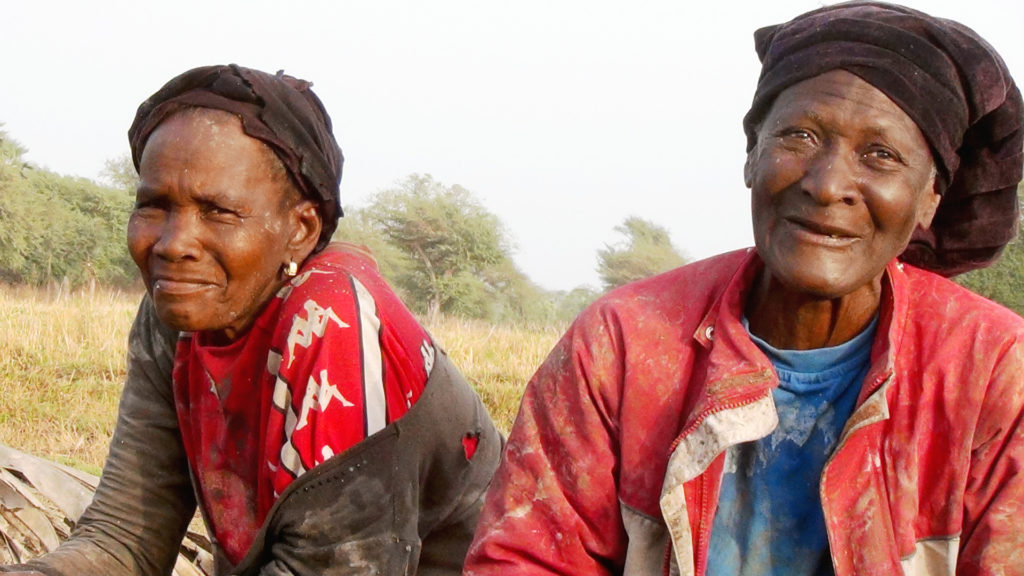 The harvesting of oysters is only allowed from 1 March to 31 May. Traditionally, this activity is carried out by women.Photo Christian Chatelain
The harvesting of oysters is only allowed from 1 March to 31 May. Traditionally, this activity is carried out by women.Photo Christian Chatelain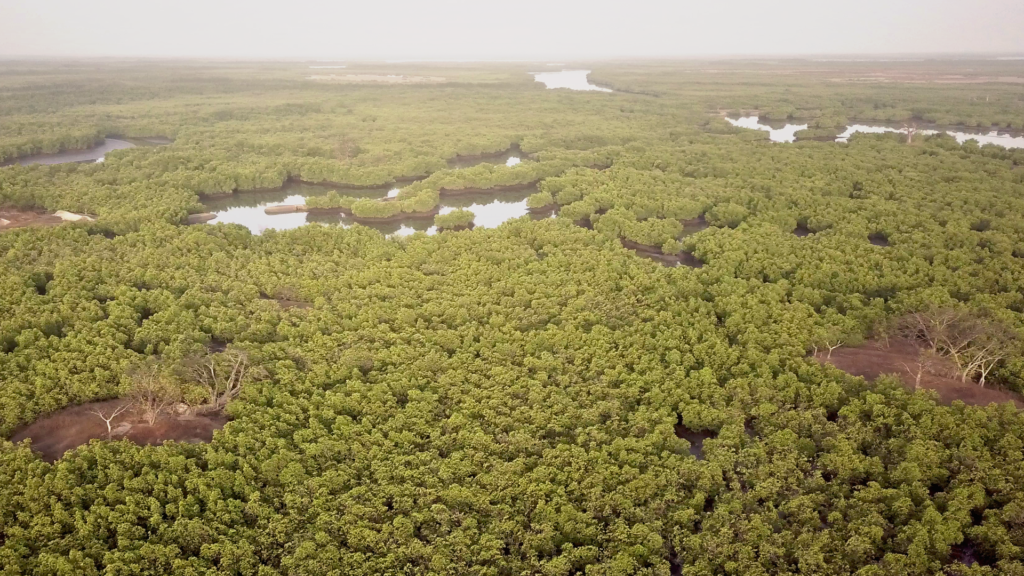 Photo: Christian Chatelain
Photo: Christian Chatelain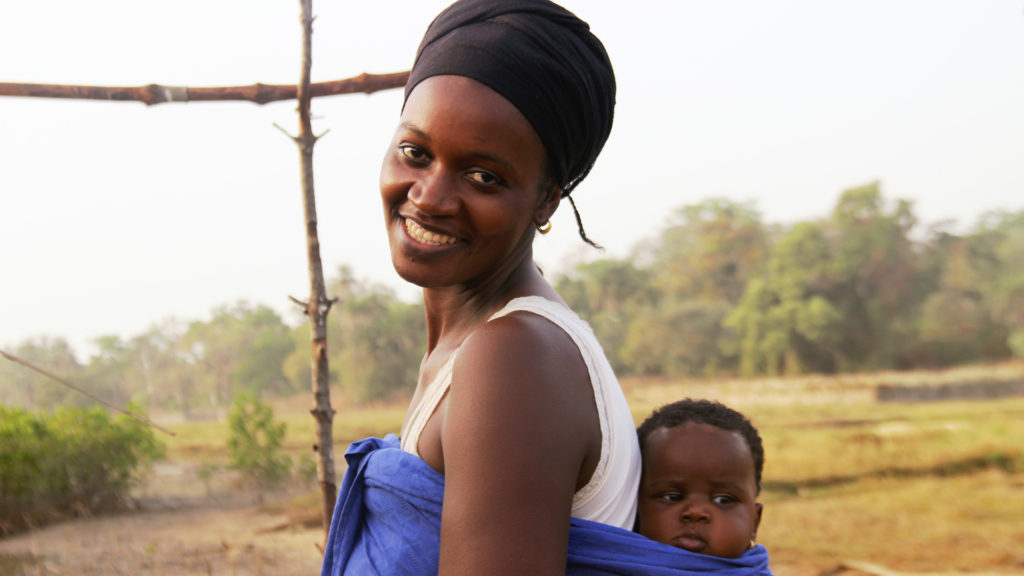 Photo Christian Chatelain
Photo Christian Chatelain
Tanzania
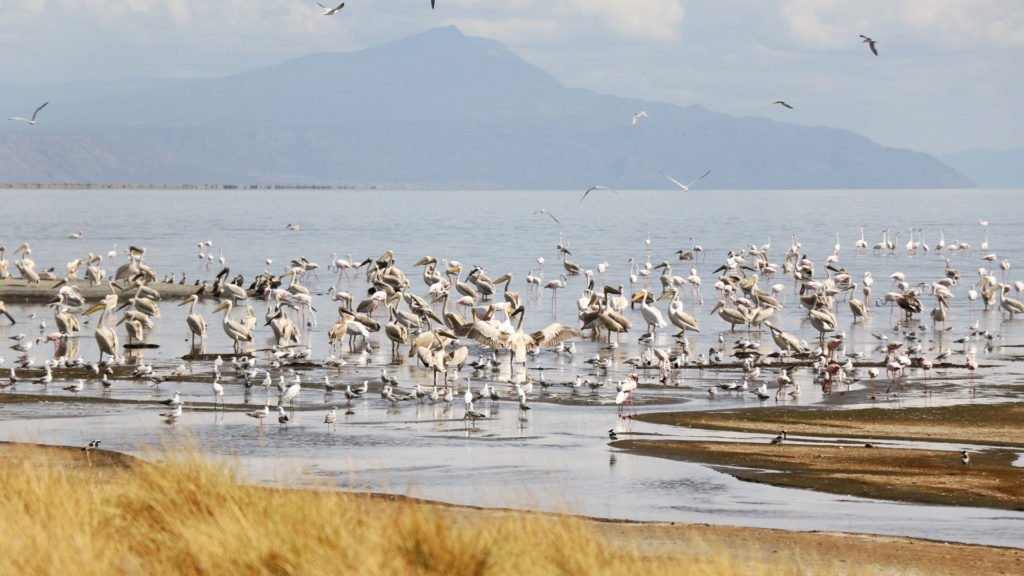 Flamingos and other birds in Lake Natron. Photo: Lodrick Mika, 2020
Flamingos and other birds in Lake Natron. Photo: Lodrick Mika, 2020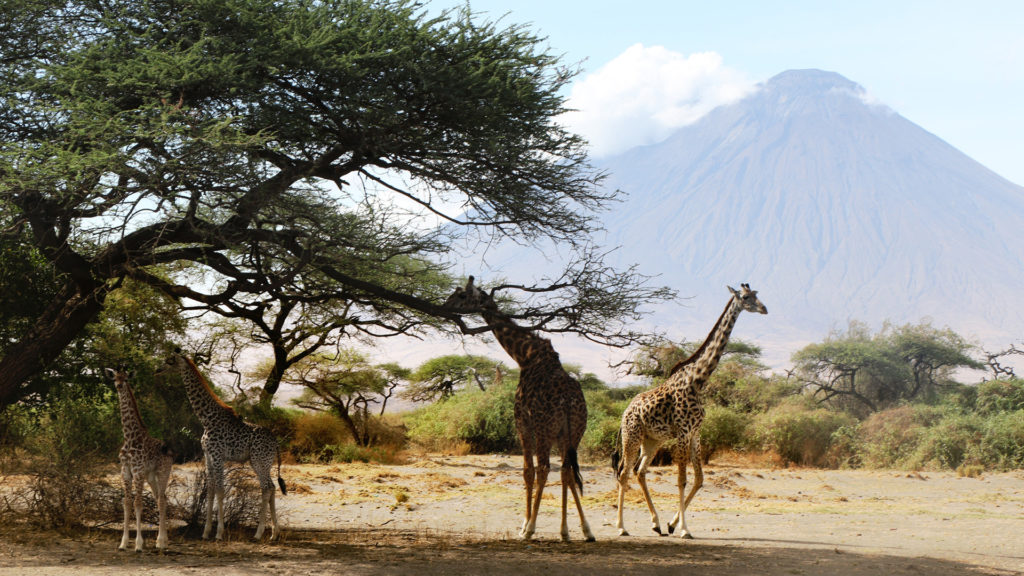 Giraffe in lowlands of Engaresero Village with Oldonyo Lengai in the background. Photo: Lodrick Mika, 2020
Giraffe in lowlands of Engaresero Village with Oldonyo Lengai in the background. Photo: Lodrick Mika, 2020 Livestock in Grazing area of engaresero village. Photo: Lodrick Mika, 2020
Livestock in Grazing area of engaresero village. Photo: Lodrick Mika, 2020